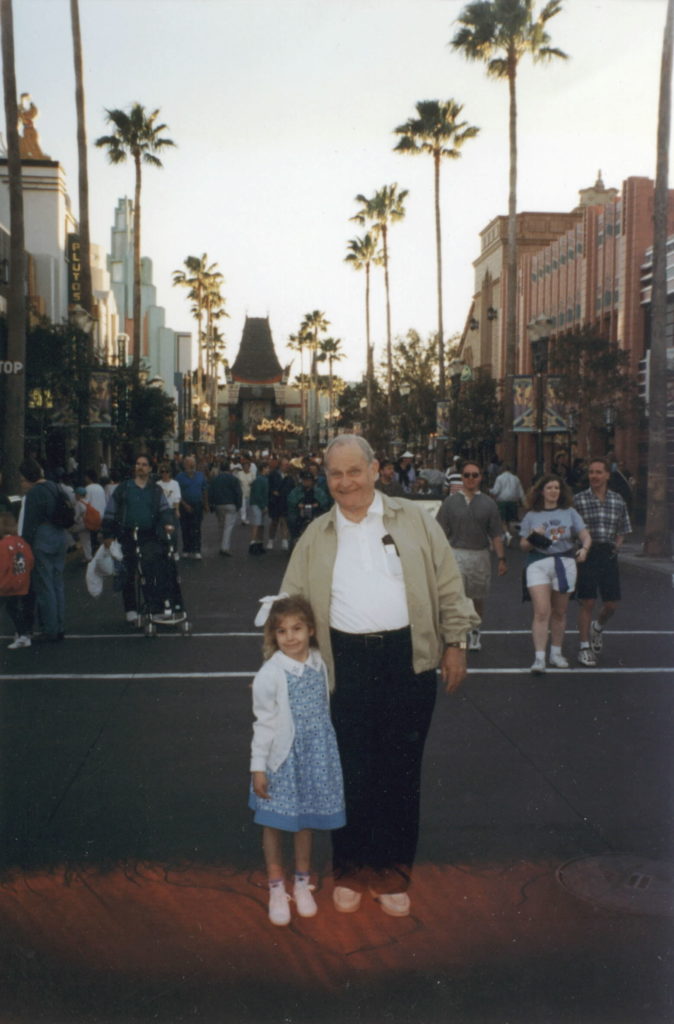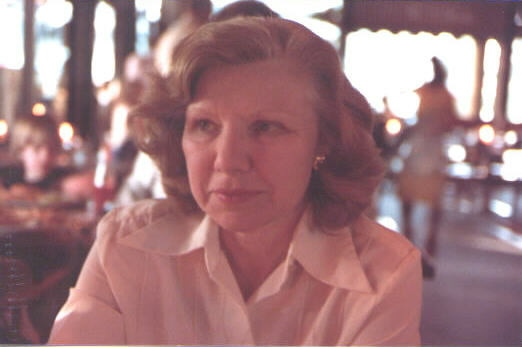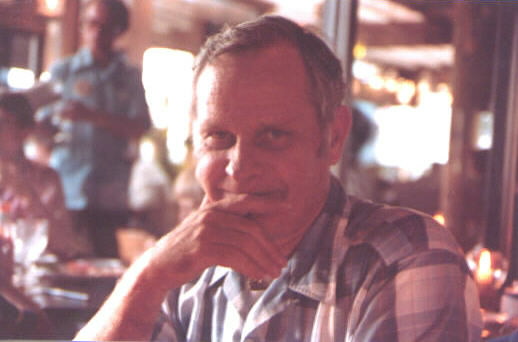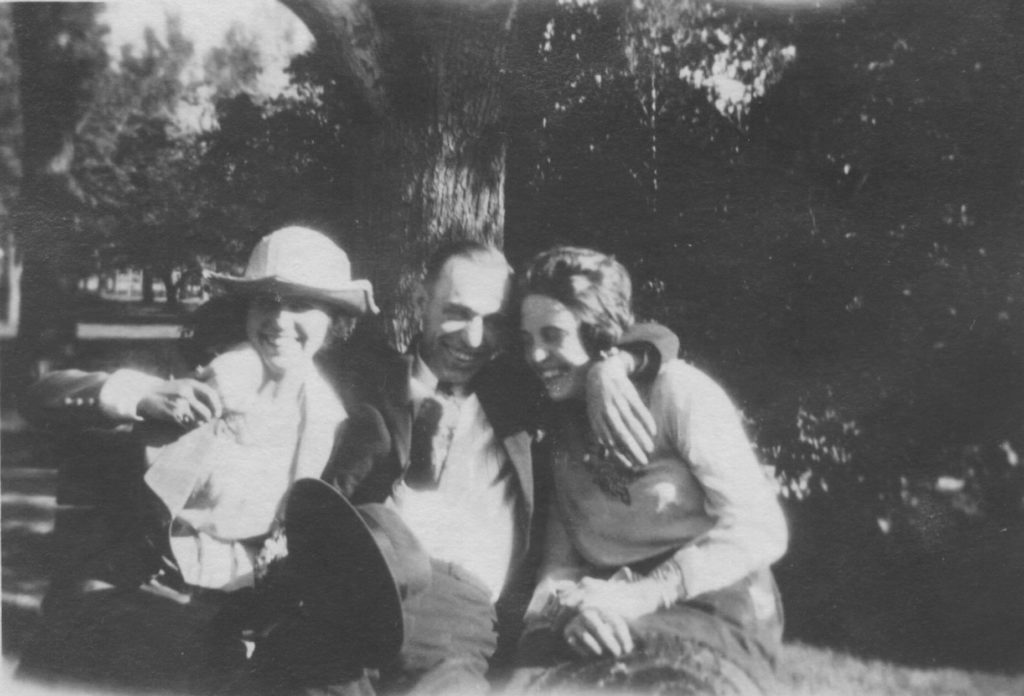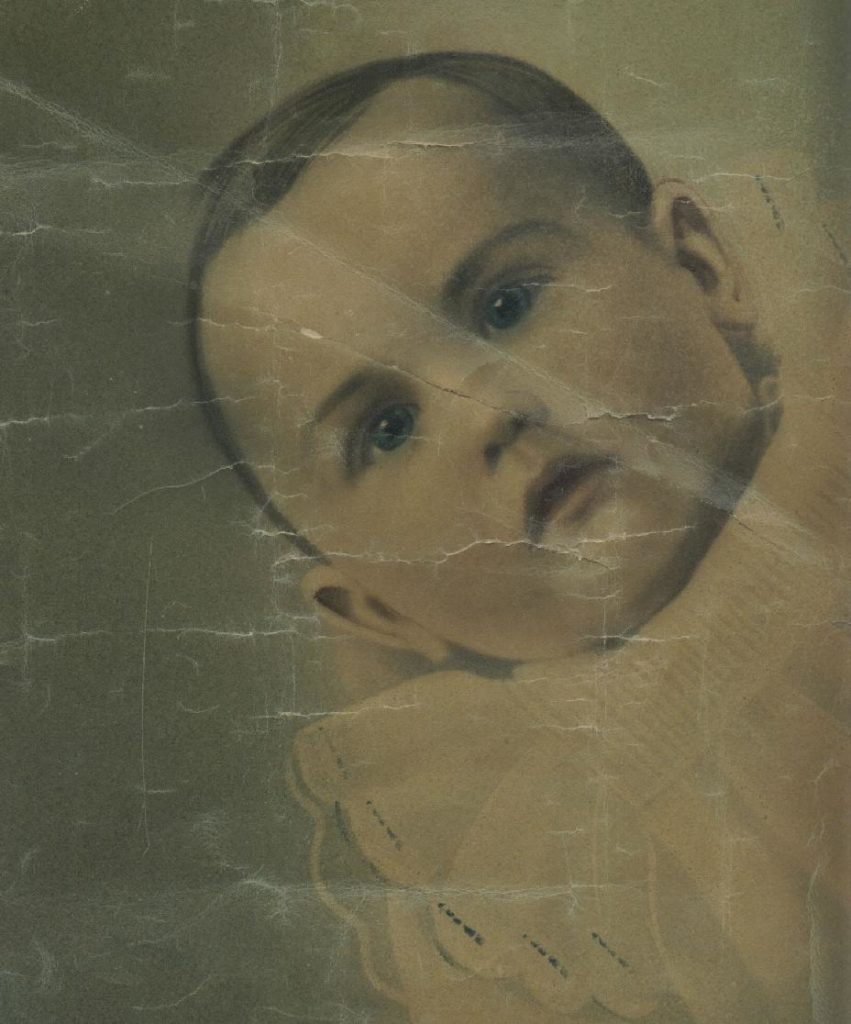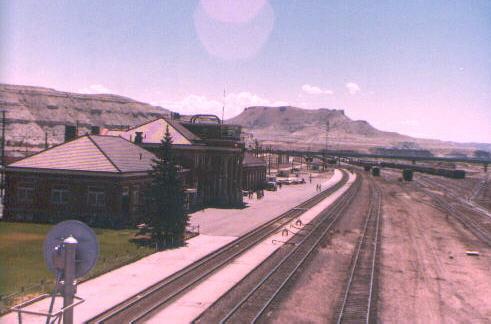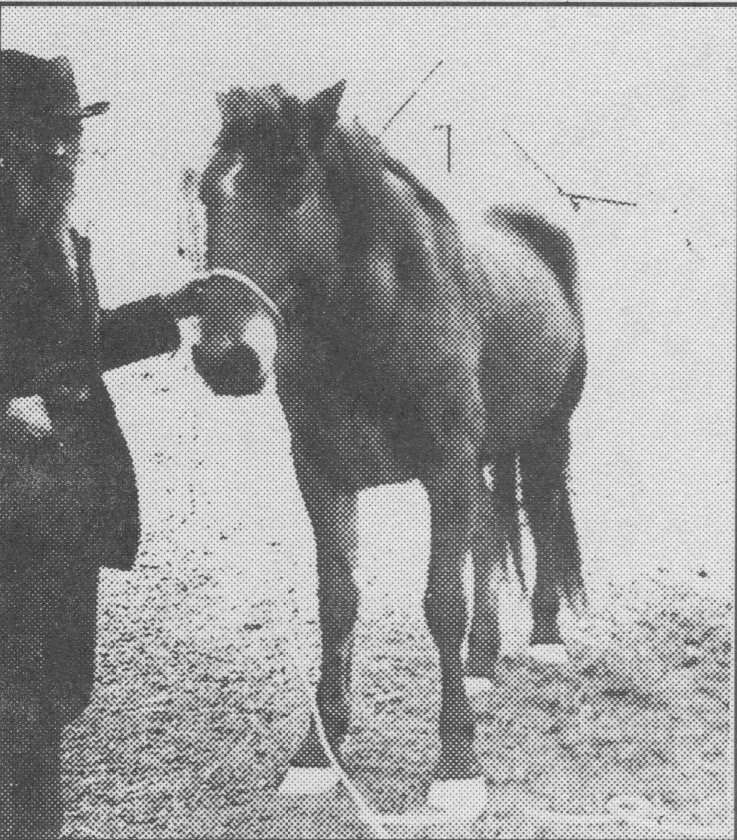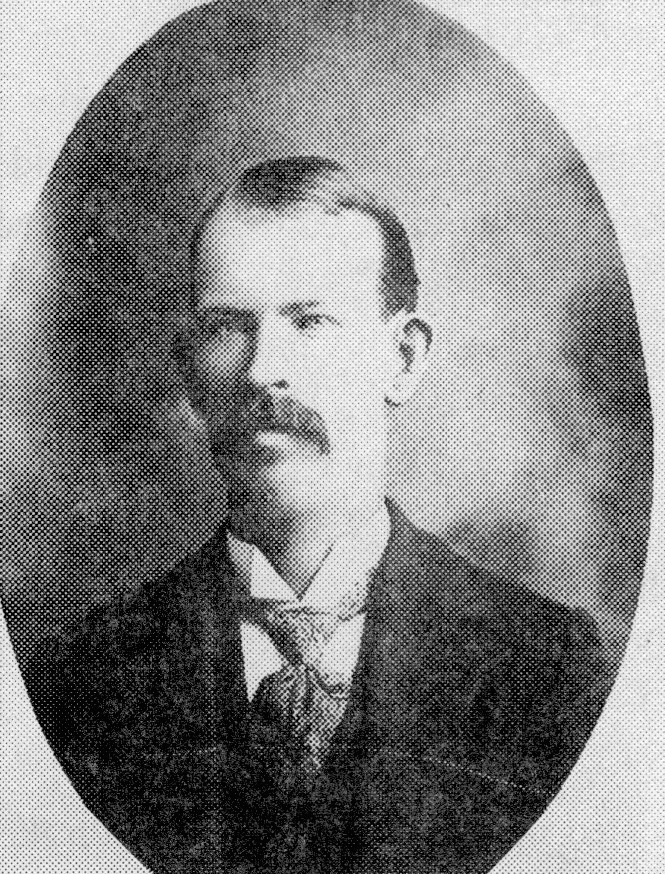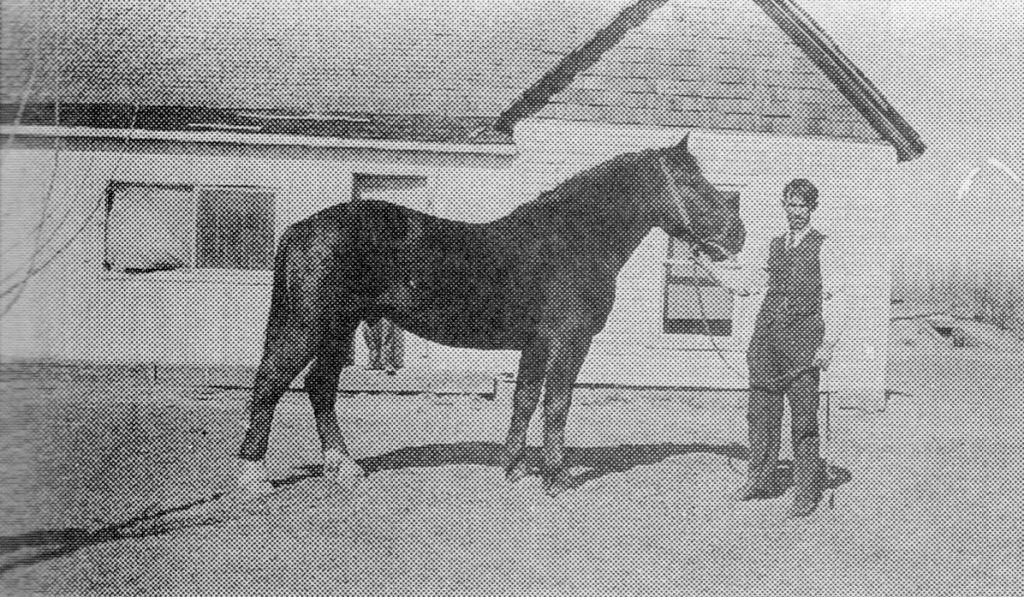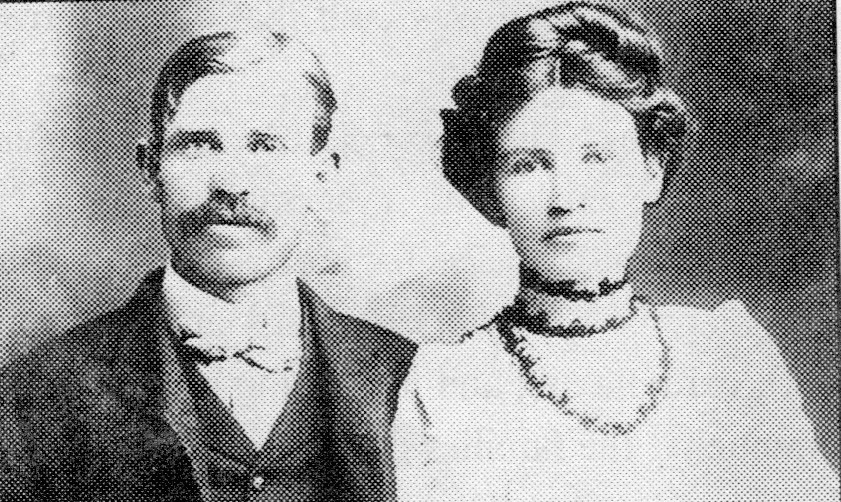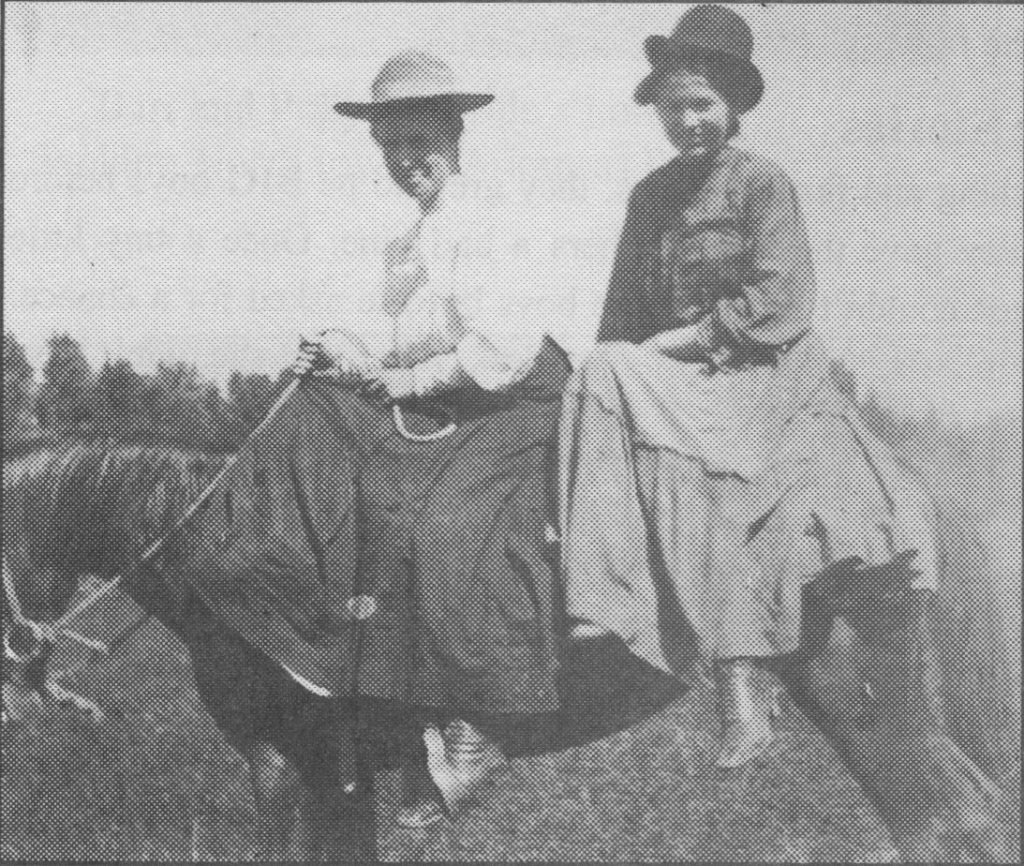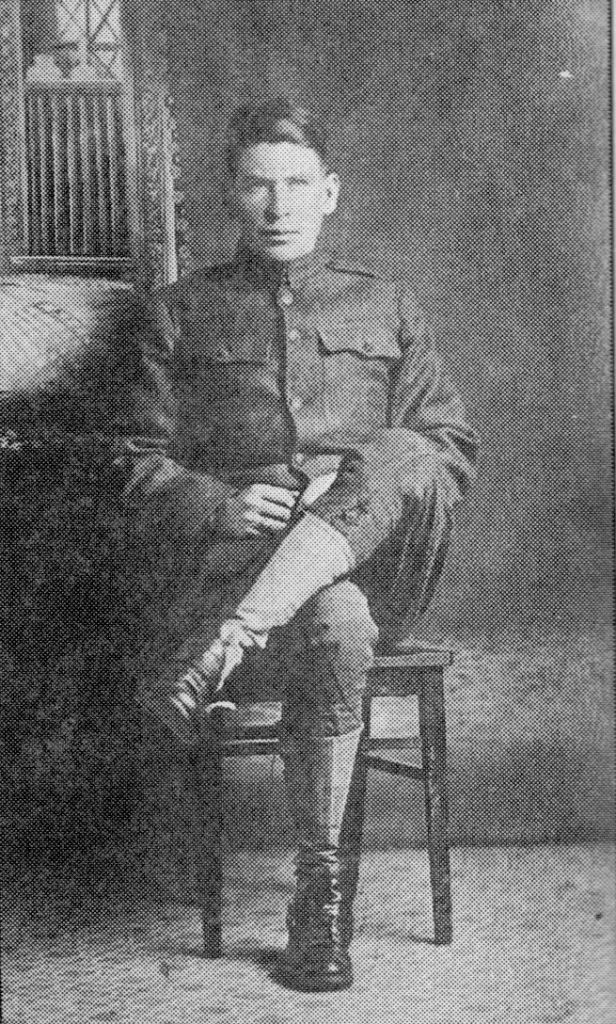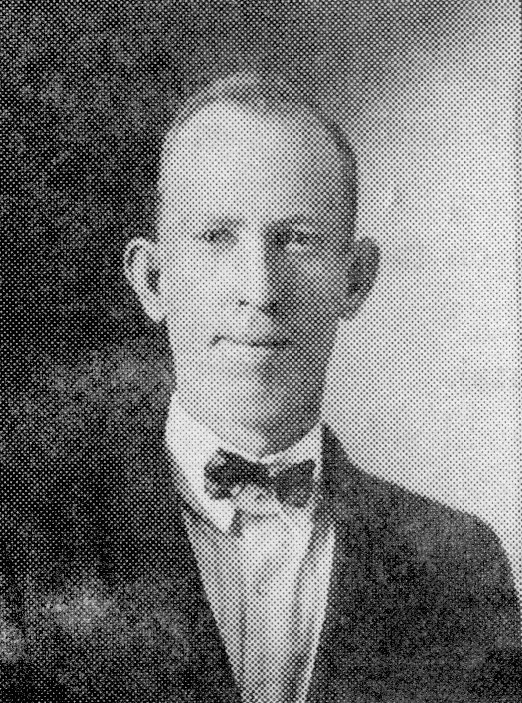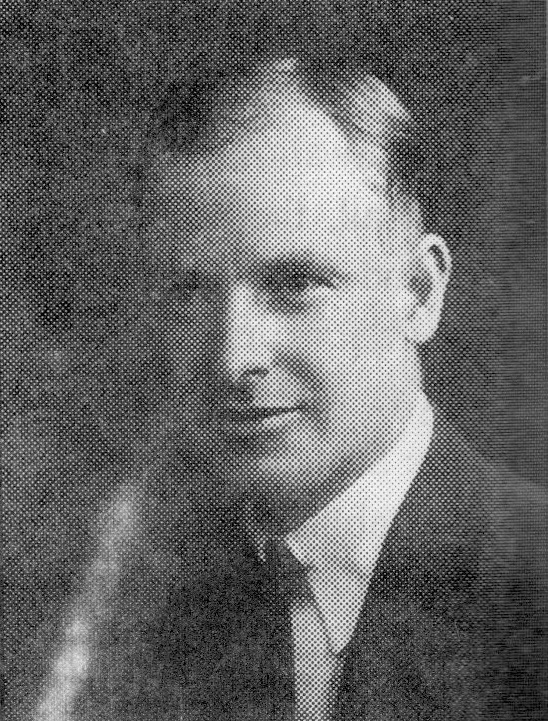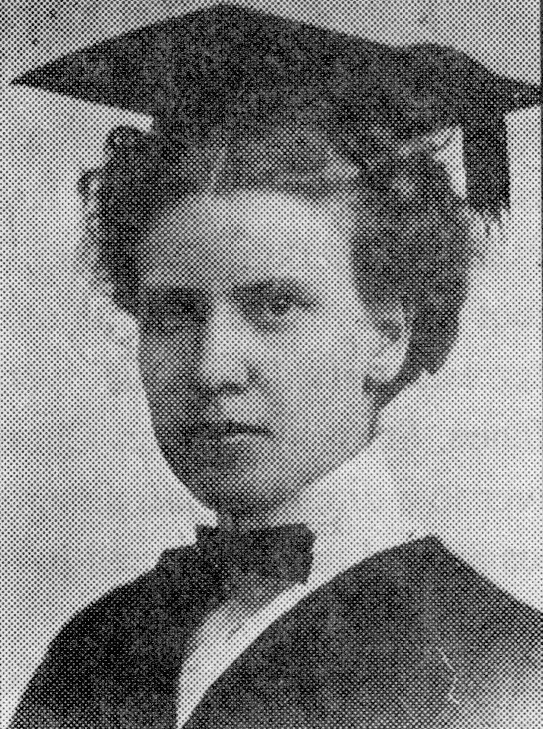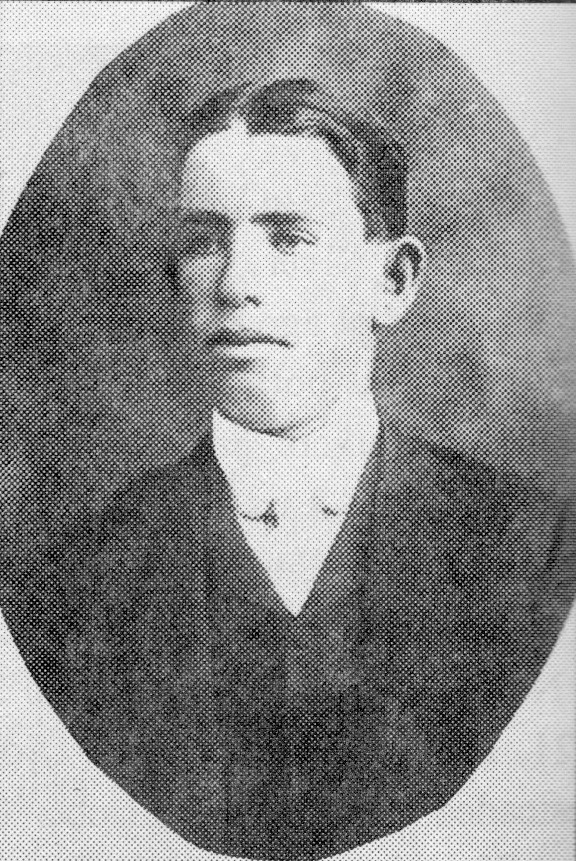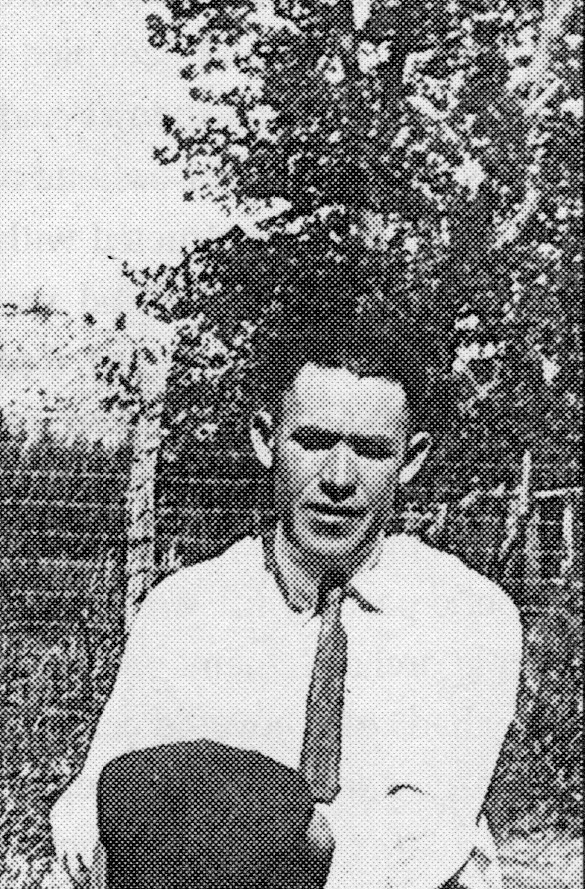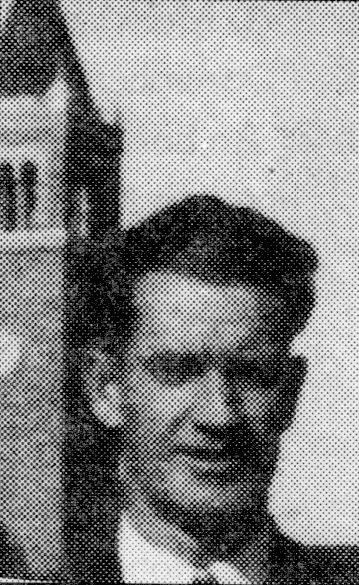On the McBride side, Linda’s paternal grandparents were the McBrides and the Littons.
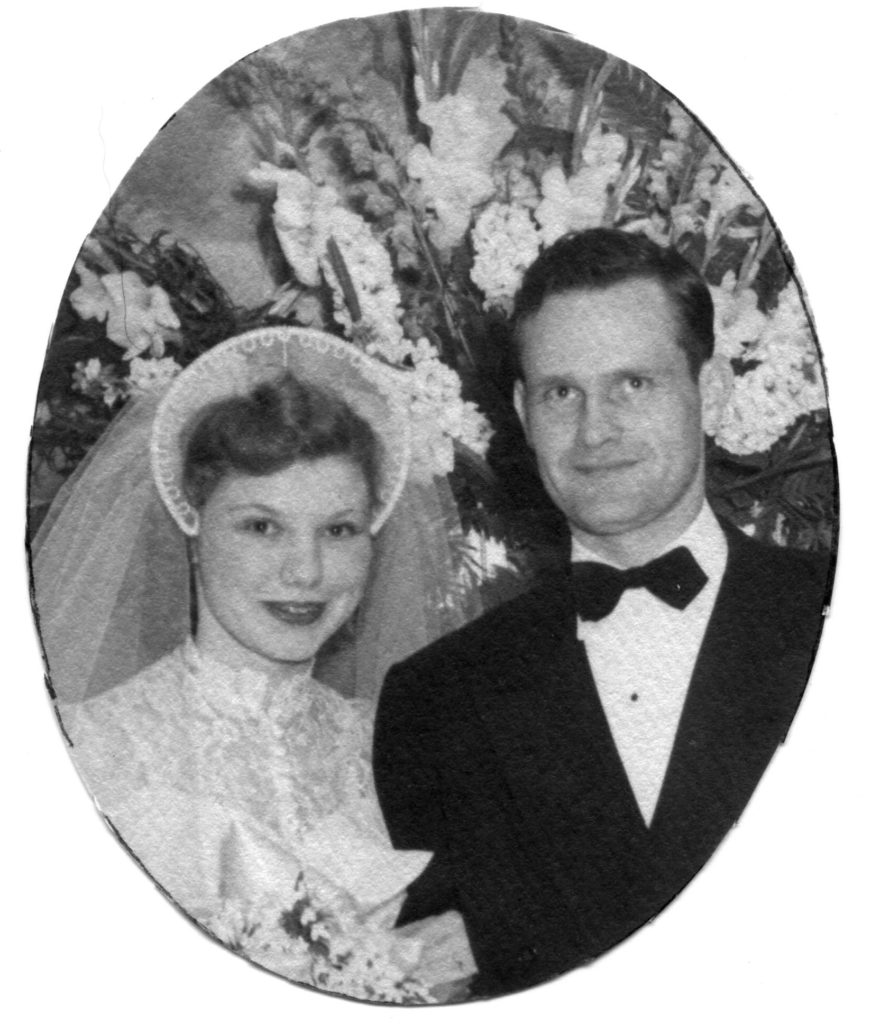
Marjorie Hugunin married Wendell Dean McBride April 8, 1950.
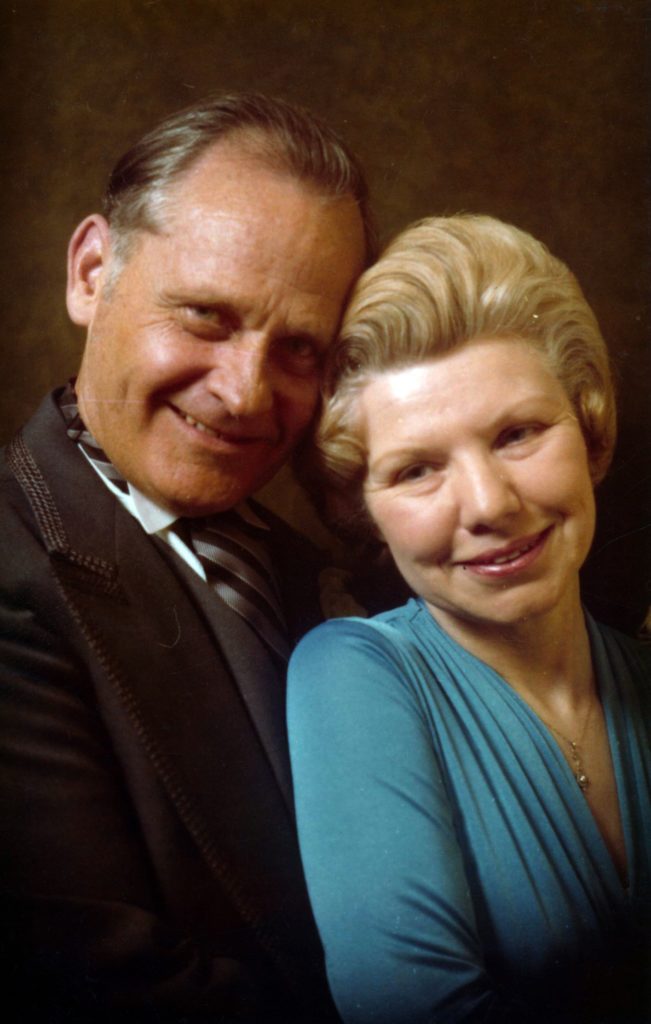
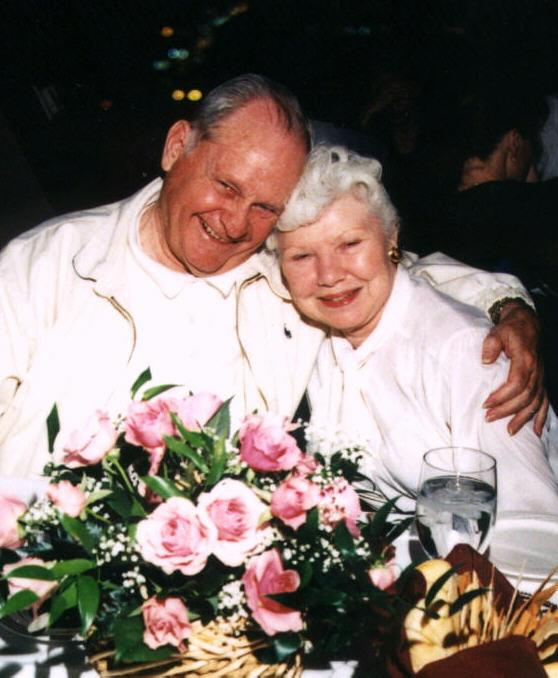
Saturday, April 8, 2000 was Dean and Marjorie’s 50th Wedding Anniversary. We flew them to Las Vegas for the evening, and gave them a whirlwind tour, ending with dinner at the Top of the World restaurant, 1000 feet above the city atop the Stratosphere Tower.
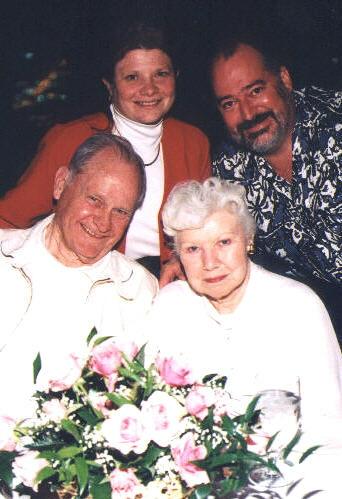
Group shot of Dean and Marjorie’s 50th Wedding Anniversary.
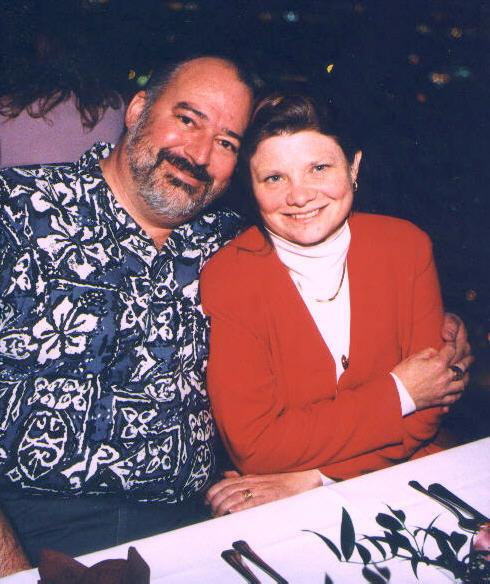
At Dean and Marjorie’s 50th Wedding Anniversary.
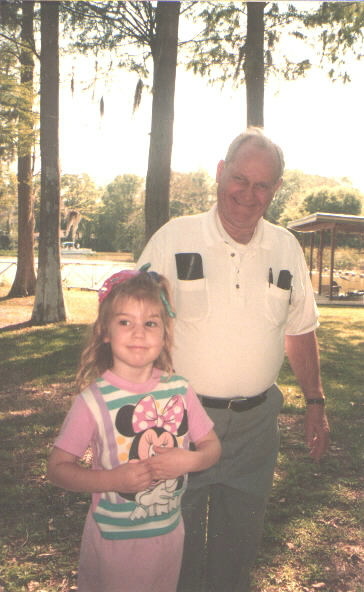
Dean and Danielle at “The River House”, 1994.
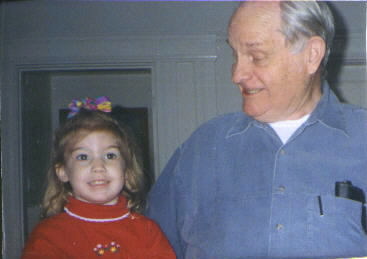
Danielle and Dean, 1994.
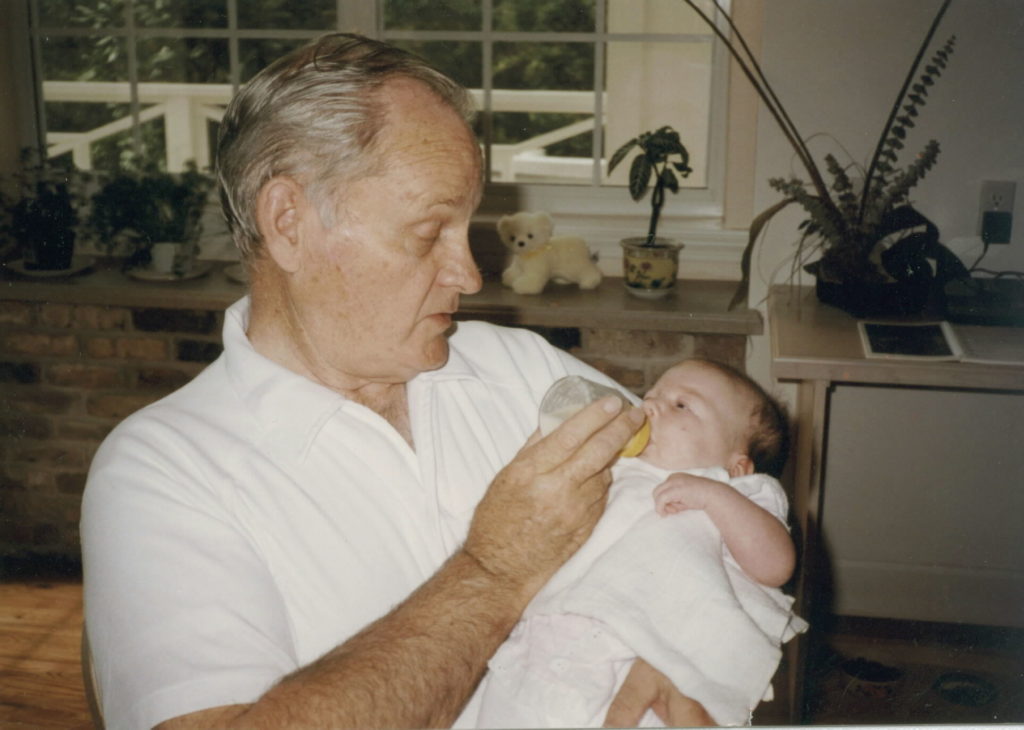
Danielle and Dean, 1991.
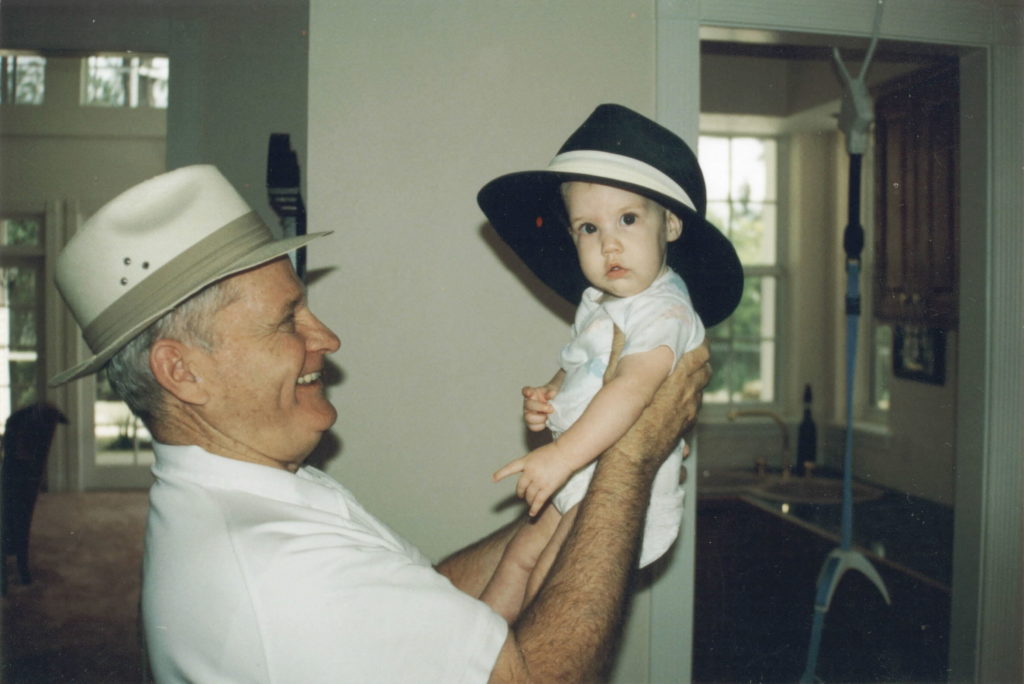
Danielle and Dean, 1991.
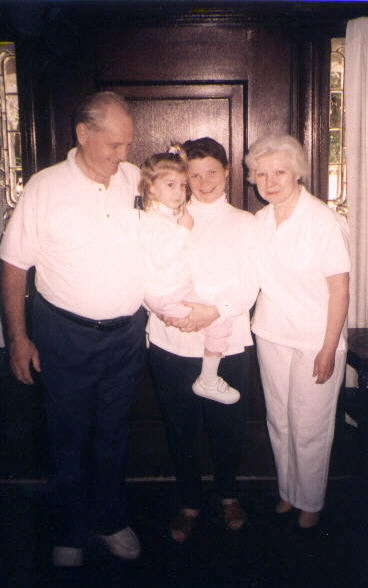
At Grandpa and Grandma’s house in Los Angeles, 1994.
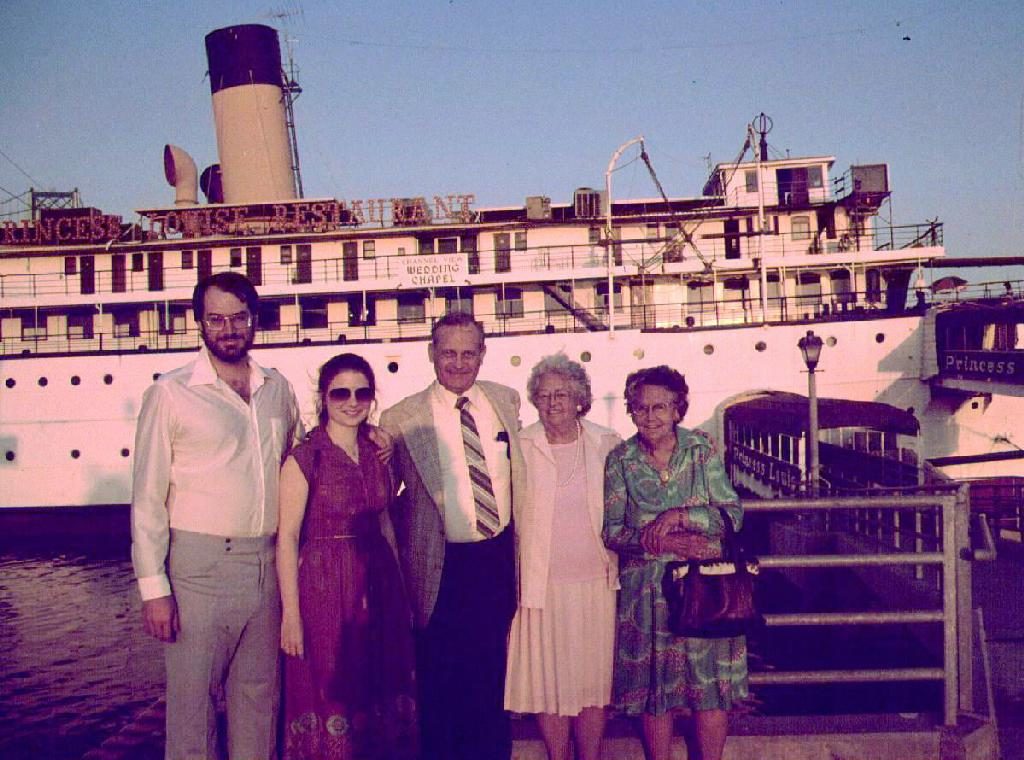
At the Princess Louise restaurant in 1979: Steve, Linda, Dean, Marjorie and Wilma, Dean’s mother.
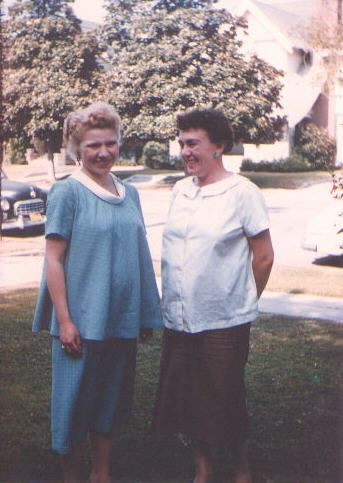
Linda’s mother, Marjorie McBride, and Bernadelle Bouett, both pregnant in mid 1956.
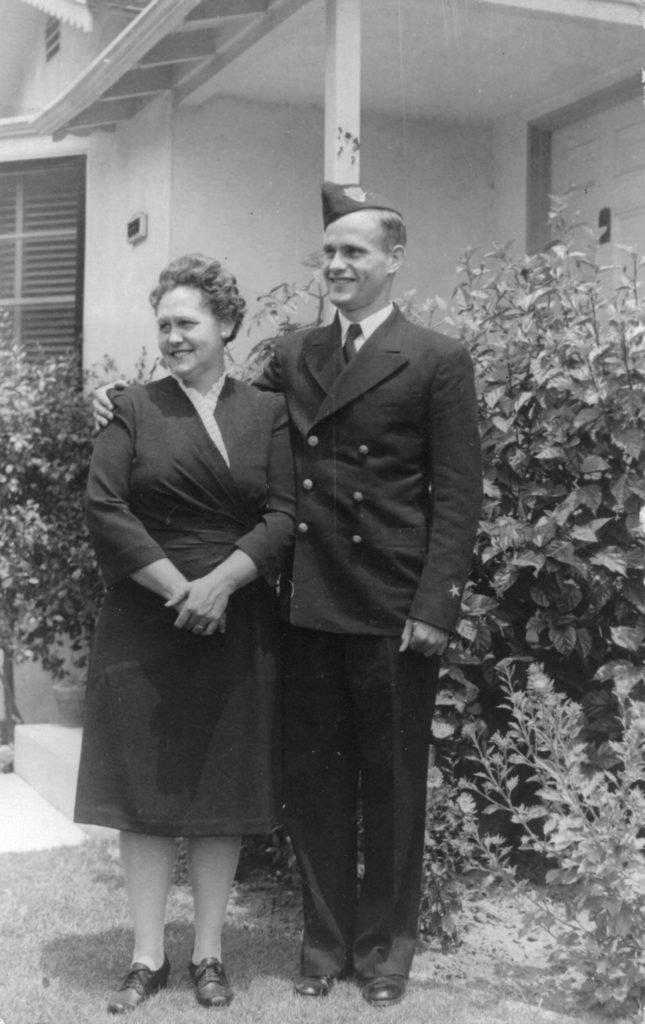
Dean and his mother Wilma, 1940’s.
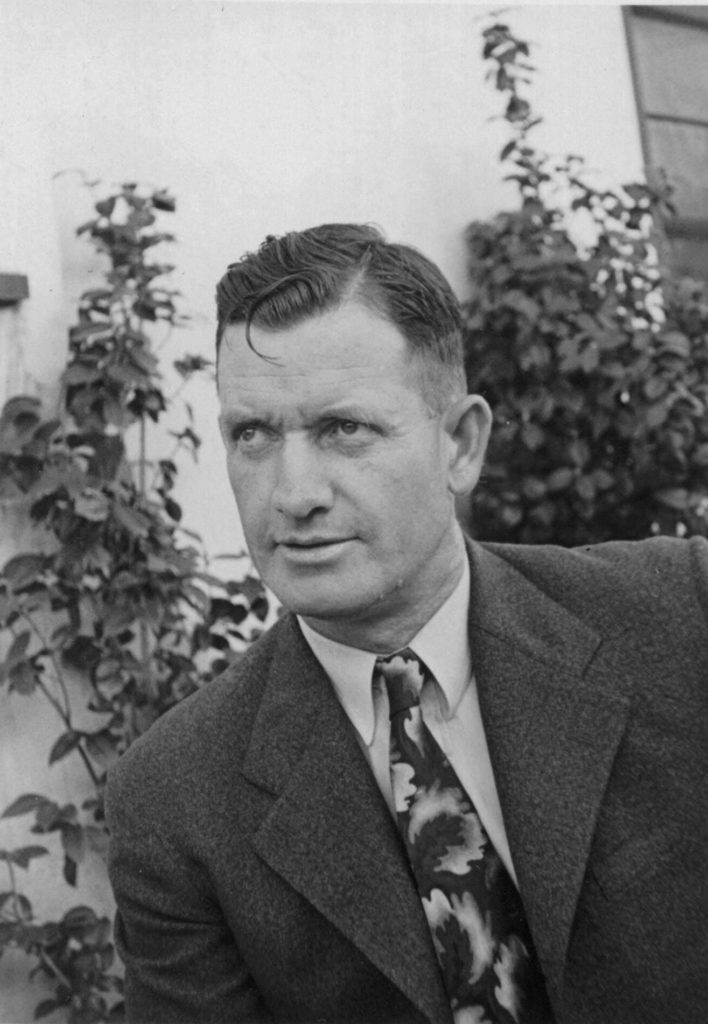
Dean’s father, 1940’s.
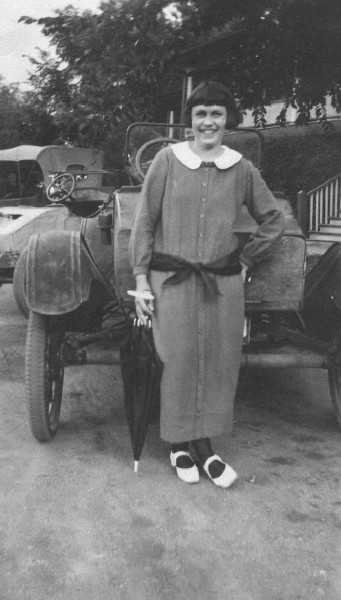
Linda’s paternal grandmother, Wilma Litton.
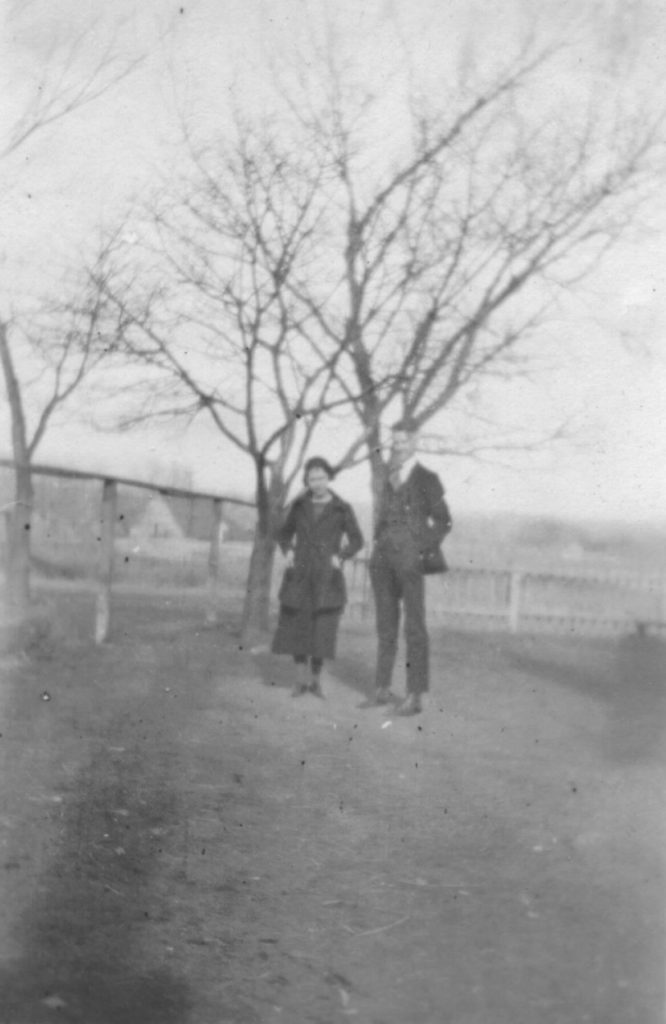
Linda’s paternal grandparents.
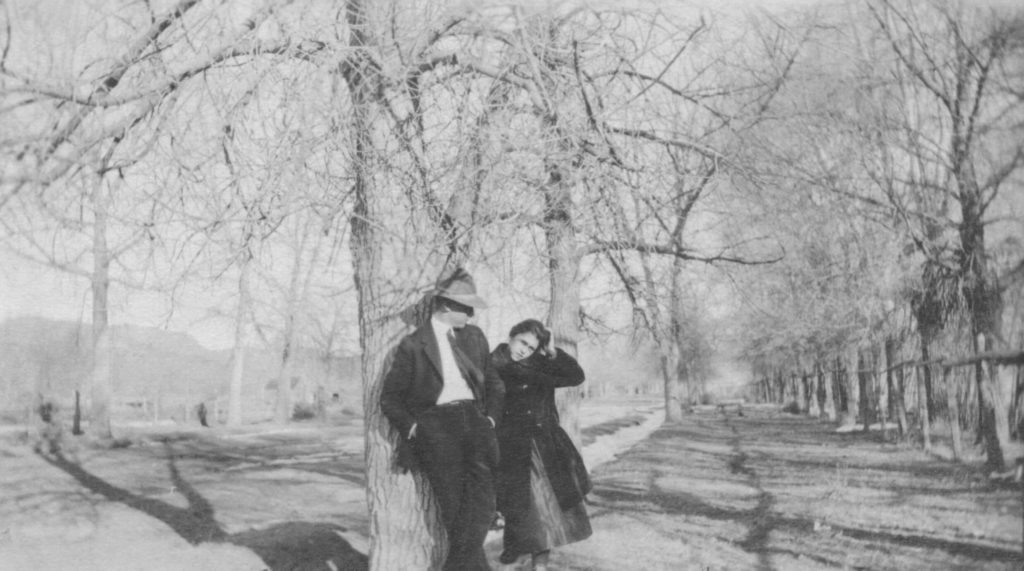
Wilma and a friend.
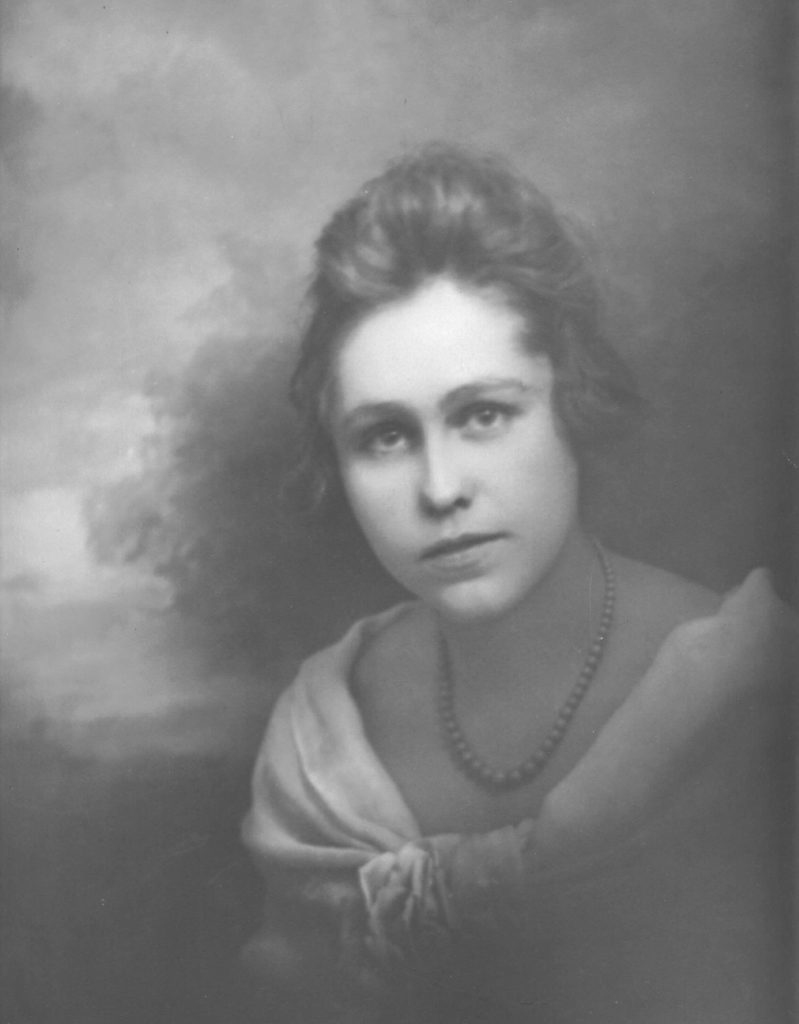
Wilma Ann Litton in Pueblo Colorado during the 1920s.
McBride Family History in Colorado
Letters to Danielle from her Grandpa Dean McBride about his childhood
Dear Danielle,
We received your letter asking for pictures and descriptions of where we live. For some time I have been thinking that had we lived closer to each other you would have heard many stories from me that started out “When I was your age…” I probably would have said it so often that you would have thought “Oh no, not another when I was your age story”. However we didn’t live close together so I’m going to make this a “When I was your age” letter, instead of about where we live now.
I was born in Pueblo, Colorado on Dec. 4, 1924 (almost 75 years now) and then we moved to Green River, Wyoming. We lived in Green River from when I was one year old until I was eleven years old. This is the “When I was your age” that I’m going to write about. This will not be a story, but instead will be little pictures of the things I remember as I grew up.
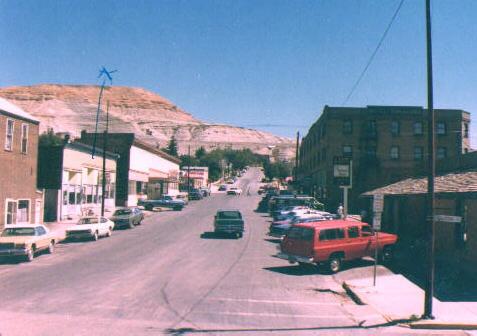
Green River was a small town on the side of a river that was called, as you might guess, Green River. And as you might guess, it was green. The river and the town were in a small valley that the river had cut down from the prairie. Sort of like a very, very small Grand Canyon. The top side of the valley was layers of red rocks and the bottom side and the valley bottom was made of oil shale, which was a dusty gray color when dry and a blue gray when wet.
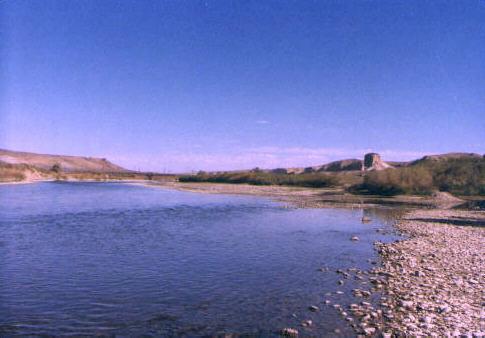
The only plants on the prairie and the sides of the valley down to the river bottomland were sagebrush, which smelled really nice after a rain, but were not very pretty. Along the river there were cottonwood trees, willows, current berry bushes, and some grassy meadows.
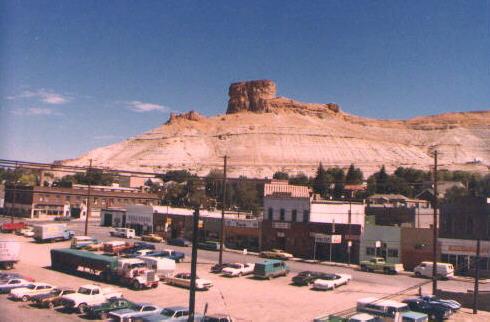
On the north side of the valley there were two big, red rock formations. One was called Castle Rock and the other was called Tea Table. Castle Rock was an enormous block that stood guard over the town. Tea Table was a somewhat smaller rock that was big at the top and very small at the bottom. One wondered why it didn’t fall down on the town.
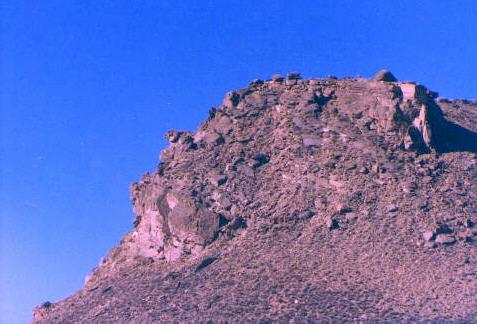
On the south side of the river there was a formation called Man’s Face. You could see the forehead, nose, lips and chin in profile.
The town was located on the north side of the river, between the red rock layer at the top and the river bottomland. This means that most of the town was built on land that was mainly oil shale. If you wanted a lawn or a garden you had to cart in dirt from the river bottom. It was depression times, and if you didn’t have a car or truck it was hard to arrange to bring in dirt that would grow plants. Nevertheless my Daddy all ways got enough dirt to grow a small garden, and we would have some carrots, lettuce, peas, potatoes and a few flowers.
We lived in three houses while we were in Green River. The first house was on the flat land near the bottom of a hill at the east end of the town. It was a little place, with a back porch, a kitchen, a room we used as a living room and another that was used as a bedroom. The bathroom was built off the west side of the house. There was a wood-burning stove in the kitchen with pipes running through it that heated up water for the storage tank that was off to one side and above the stove. There was an icebox on the back porch. During the summer, the iceman brought us ice. As it melted, it dripped down into a pan that was underneath. You always spilled water on the floor before you could dump it in the sink.
In the living room there was a wood and coal burning room heater. The inside of the heater was the standard potbelly stove. There was an outside cover made of heavy sheet metal with a dark red enamel. Louvers in this cover made the air in the room circulate better. One cold morning I was dressing in front of the heater. As I bent over to pick up my underpants, my backside touched the louvers on the stove. For days I had a red striped pattern of burns on you know what. Later on we went modern and got an electric range, a refrigerator and an electric water heater.
There wasn’t any grass around our house or any of the houses that were near us. However my Daddy did have a small garden, about eight feet by eight feet in size.
Near us and built into the side of the hill was the home of my Mama and Daddy’s (your great grand parents’) best friends, the Peacocks. Their home was built of railroad ties, which are logs about eight inches square and about eight feet long. The ties were soaked in creosote to make them waterproof. They had an oily smell that was mot unpleasant. The house was nestled into the side of the hill, and Mr. Peacock had a small lawn and garden in front.
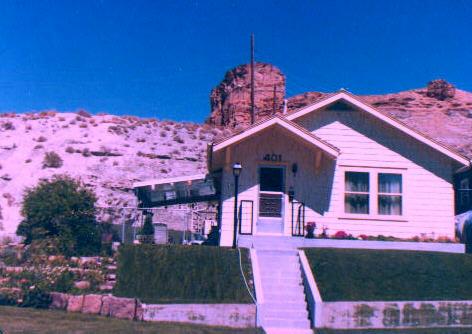
The second house we lived in was at about halfway down the side of a hill, below the southeast corner of Castle Rock. It had a living room, a bedroom, a kitchen, a bathroom and an enclosed back porch. The red stove went with us and was placed in the living room. There was a small lawn in front. In the back, about fifteen steps from the house, the hill started up on its way to Castle Rock. On the south side of the house was a flat area where there were clotheslines. This was also where Daddy had some river bottom dirt brought in for his garden.
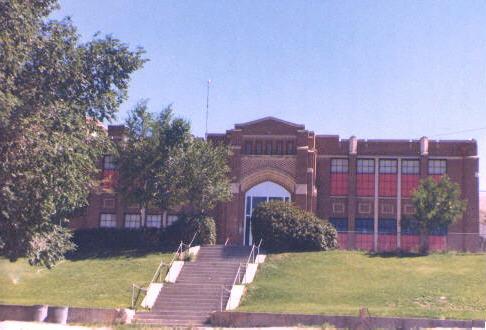
The Washington Elementary School was located just across the street. A dirt street ran from the center of town straight up the hill to the school, turned and ran along the side of the school, then wandered around the hill up to the cemetery on the prairie.
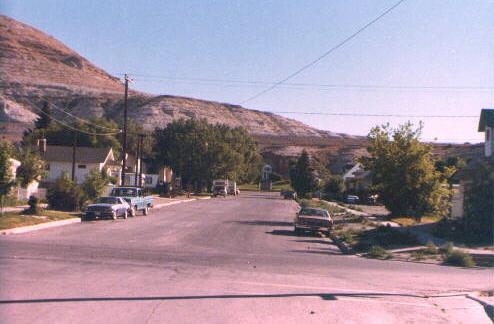
The third and last place we lived was at the west end of town. We only lived there a short time before we moved to Los Angeles. I can’t remember much of interest that happened there.
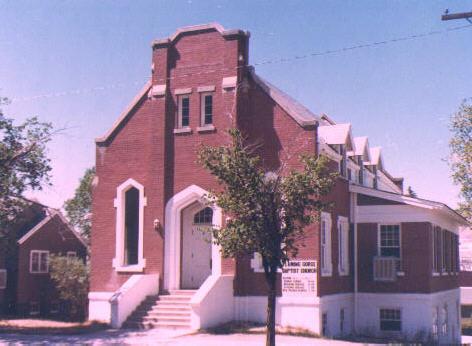
The enclosed pictures are from my Mama, and the notes on the back were written by her. The pictures were taken many years after we left Green River, so some things changed. For instance, there were not as many trees back then and the school did not have a lawn, just oil shale. Also, there were no houses located below Man’s Face.
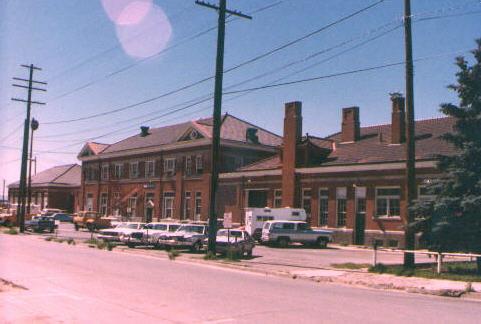
I hope you find the pictures and this letter interesting. I will follow up with some other memories later. There are just too many things to put in one letter.
Nov. 25, 1999
Dear Danielle,
It’s Thanksgiving morning and I am reminded of some more “When I was your age” stories. But first I must tell you about Aunt Sally who was my Daddy’s sister. She also lived in Green river.
We always said we were going over to “Aunt Sally’s”, but “Aunt Sally’s” meant Aunt Sally, her oldest child Margaret, the middle child Dorn, the youngest Harold, and her husband Uncle Sy. Aunt Sally wore big thick glasses. She always had on an apron, and talked happily, and loud. She was one of my favorite people.
Margaret was too old to have anything to do with one as young as I was. However when I met her after I grew up I found out that she was a very nice person.
Dorn and Harold were also some of my favorite people. They always let me tag along with them and help(?) them with whatever they were doing. Every summer they had a large garden planted around two sides of their house. They grew corn, carrots, turnips, cabbage, and lettuce, to name a few. Little new carrots that are pulled up, the dirt rubbed off and eaten on the spot are very cool and delicious.
Uncle Sy worked at the “power plant” that provided all the electricity for Green River. The plant was only a few hundred yards from their home. I remember that it had a cooling pond. The cooling pond had three big pipes that ran out about 6′ above the pond and there were many spray nozzles on each pipe spraying water up in the air. I guess it wasn’t really very pretty but it was my “fountain” and I got much pleasure watching it.
Aunt Sally’s was on the other side of the railroad tracks about three miles from where we lived. As we did not have a car and there were no streetcars, buses or cabs we had to walk when we went to see them. On the other side of the tracks there were a few homes, a baseball park (no grass on the playing field) and a bridge that went over to the island in the river. The island had a recreation hall, cottonwood trees and willows. We sometimes went to the island for picnics and wading in the river.
Did you know that if you take a piece of new willow about 6″ long, cut a notch about 2″ from one end, then very carefully push the wood out of the bark, you end up with a round piece of wood that is very slippery and a tube of bark? You can then cut off a small piece of wood from the notch, back to the closest end. Then cut out a chamber from the notch in the other direction. If you then slip the wood back into the bark with the small cut lining up with the notch, you have a whistle. I made many of them.
This has been along way of getting to what I remember about one Thanksgiving. It had snowed a few days before, but Thanksgiving Day was sunny and warm. The Green River High School football team was playing the Rocks Springs High School football team. The game was played at the baseball park; a football field had been marked off on the playing field. The reason we were there was that Dorn was playing for Green River. This was my first chance to see a football game. Cars lined up along the sidelines, and people sat on the tops or fender of the cars, or just stood along the sidelines.
As I mentioned, there was no grass on the playing field, but there was still snow between the lines that had been marked off. At the start of the game the teams took the field, dressed in their bright colorful uniforms. The snow on the field was shinny white, and the spectators on the sidelines were happy and noisy. It was a beautiful sight. However as the game progressed the snow was trampled into the dirt or was melted by the sun. By the end of the game the field was one big mud puddle and the bright colorful uniforms had become so muddy that we couldn’t tell one team from the other. I guess they were all honest and lined up on the right side, but we couldn’t tell it from the sidelines. I don’t remember who won, but that was the first football game I ever saw, and it was on Thanksgiving Day.
Feb. 10, 2000
Dear Danielle,
Christmas and New Year’s have come and gone and I am thinking of things wintry, when I was your age. The first thing that comes to mind is one Christmas.
This Christmas we (my father, mother and brother) had gone over to Aunt Sally’s for dinner. When we got there, her tree was lit up with many lights and was truly awe-inspiring. As we were all gathered around the tree, Dorn picked my brother Monte, who was about 2 years old, and told him to blow out the candles. Monte finely gave one big blow and Harold pulled the plug of the lights; sure enough, the lights all went out. Monte was really amazed and we all laughed like mad.
This may not seem too funny now, but that was the first time that any of us had ever seen electric lights on a Christmas tree. Up to that time, all I had seen on Christmas trees were candles. The candles were about two birthday candles thick and a little longer. They were placed in little candle holders that were made of metal and had a clamp attached to the bottom. The holders were placed very carefully on the tree and were located such that there would be no branch above the candle. The other important thing, of course, was a large bucket of water right next to the tree. When the candles were all lit it was a really beautiful and awesome sight.
Late every fall my Daddy would order a load of coal to be used during the winter. When we lived in the house on the side of the hill across from the school, the coal was dumped beside the house in the comer between the back porch and the house. A coal bucket is a special bucket with a spout on it for pouring the coal into the strove, sort of like a great big gravy boat. It was my job to fill up the coal bucket and take it in to its place beside the room heater.
I remember one moment especially vividly. One winter day I had just filled the coal bucket. It was a very big load for a small boy. As I walked around the comer of the house I could just see the river way down the valley. It was cold, wind was blowing, and the clouds were hanging low below Man’s Face across the river. The bottom of the clouds were fluffy and all shade of gray, from a light gray to a very dark, almost black, angry gray. I could see that it was snowing down by the river, and I knew we would need the coal before morning.
On top of Man’s Face there was an aircraft beacon. Every night this beacon came on and the light spun around all night. This was before they had radar, so the beacon light was used as a landmark to tell the airplanes that they were over Green River. One winter afternoon the clouds were hanging so low that and I couldn’t see the top of Man’s Face. I could hear an airplane circling, high up in the clouds. I was sure they were lost. The plane circled and circled for the longest time, but then I couldn’t hear it any more. This may seem strange, but at that time in my life I had never seen an airplane. I had heard them, but never seen them. I sometimes wished that one would have to make a forced landing so that I could see what it looked like. I didn’t want any one to get hurt but I sure would have liked to see one. I still wonder what happened, and hope they made it down safely some place.
We didn’t have a clothes dryer. In fact, there wasn’t such a thing. So after Mama washed the clothes they had to be hung outside. Sometimes I helped bring them in after they dried. In the winter I often went outside with the clothesbasket, only to find that the clothes had frozen stiff. To get them into the basket I had to fold them. They didn’t break, but I couldn’t just drop them in, like I did in the summer. This was especially true for the sheets. I remember the sheets had a nice smell as I folded them.
Milk was delivered early in the morning and left on our porch. The milk was in a glass bottle and there was a cardboard disk that was used to seal the bottle. Sometimes in the winter when I went out to bring in the milk I would find that it had frozen. There would be a five or six inch column of frozen cream, rising right up out of the milk bottle. I would very carefully bring in the bottle and put the frozen cream in a bowl. Sprinkle on some sugar and voila, I had ice cream for breakfast.
I remember one particular trip to school when I was very young. This was when we lived in our first home. It had snowed that night, but the sun was out and everything was bright and shiny. Mama dressed me in long underwear, a sheep’s skin coat, mittens, wool cap and overshoes. When fully dressed, my arms stuck out at the sides, and I had to walk with a sort of rolling gait. (In retrospect, I must have looked like I had on a primitive space suit.) On the way to school, traversing this blanket of snow without a single footprint in it, I just had to walk in all the drifts of snow, especially where the snow was at least up to my waist. When I got to school, all of those clothes had to come off, except the long underwear, of course. The worst thing was trying to take off the overshoes. They were designed by the devil. They had five or six sheet metal latches. When they were full of ice and snow, and when my fingers were cold and numb, they hurt my fingers and were very difficult to unlatch.
Once my Daddy was in the hospital in Rocks Springs, which was about 16 miles from Green River. Going to Rocks Springs was a very long trip and usually was considered an all-day outing. Well, late one afternoon we started out to see my Daddy in the hospital. We were in Aunt Sally’s Model-T Ford. It had to be cranked to start it and it had wheels that were made with wooden spokes; they looked a little like wagon wheels. It was a touring sedan with a front seat, back seat, a top make of fabric that folded back for sunny days, and fabric sidepieces with plastic windows that could be snapped in place when the top was up and the weather was bad. Somewhere along the way, the weather turned bad and developed into a blizzard. It got so dark that the car lights had to be turned on. The snow was plastered to the windshield so thick we couldn’t see the road. Aunt Sally was driving. She had to wrap her head with a scarf until the only thing you could see were her eyes. She had to drive the rest of the way to Rocks Springs with her head hanging outside the car. I didn’t realize it at the time, but we must have been in great danger, and Aunt Sally was a real hero to get us to Rocks Springs.
Well I have wandered on talking of things just as they came to me. Hope you found them interesting.
May 17, 2000
Dear Danielle,
Here we are and the year is hanging between spring and summer, and I am remembering things that happened this time of year when I was your age.
One of the first things I remember is a day in school when the sun was shining and beckoning me to come out and play. My schoolroom was on the second floor and my desk was next to the window, near the back of the room. When I looked out the window I could see the road that went between the school and our house across the street, and see where it started its trip around the school and up to the prairie. When I looked up I could see where the prairie turned into a shelf of land that ran below Tea Table Rock and Castle Rock. On this day, in the morning, it happened that I saw the start of what would turn into a river of sheep going to a sheep ranch for their spring sheering. As they flowed along I could see the sheep dogs, there must have been six or seven, running back and forth nipping at heels to keep each drop of sheep in that river. I watched for hours. I don’t know how many sheep there were, but there must have been thousands of them. What the teacher was trying to teach us that day I don’t remember, but I do remember that river of sheep.
A little later we borrowed Aunt Sally’s Model T Ford and went to visit a sheep ranch. On the way to the ranch we ended up on a dirt road that was two ruts in the prairie. The sage brush had been worn away and left the ruts with many holes and rocks of all sizes, every now and then there would be new ruts that went around the old ones that had become too deep or the rocks too large to drive a car in or over. Along the way we saw two things that have always remained special in my memories.
First: as we went along we came upon a heard of antelope. This was the first time I had seen antelopes and to see a heard of them was real exciting. When we got too close to them they decided they had seen enough of people and took off across the prairie at full speed. Full speed means they were running as fast as they could, in a straight line, and it looked like they were floating over any sage bush that got in their way. It must have been a sight to remember because I remember it.
Second: a little later we saw something that not many people have seen. We saw a herd of wild horses! There must have been about twenty of them. They also took off a£ full gallop when they saw us. There were brown ones and black ones and as they ran their manes and tails were blown back by the wind created by their speed. They were incredibly graceful as they escaped from these people that had invaded their home. We watched until they faded from sight on the horizon.
As we drove along all of a sudden there was a very large gully in the prairie. Down in the bottom of that gully there was a sheep ranch. I say ranch but it may not be what you think of when you hear the word “ranch”. There were a few cottonwood trees around the ranch house. The house was long and low, the wood siding was not painted and had been grayed by the weather. There were windows at either side of the door, and the top of the door was only a few inches below the eaves of the roof The top of the roof was just a little bit higher than the top of the door. The roof may have been sod dirt, I can’t remember for sure. They had a spring in the front yard for drinking water and it was bitter with soda or alkali. It tasted so bad I spit it out. For sure I still remember that awful taste. They were not sheering sheep that day, and that is all I remember of a sheep ranch.
Sometimes two or three families would go for a picnic down by the river at a place called Scot’s Bottom. The fiver made a big loop there and was lined with cottonwood trees. Do you know that once a year the cottonwood trees have little fluffy seeds on them? When a breeze came by it blew a cloud of seeds out over the meadow that was in the center of the loop. Just like giant dandelions. You know about dandelions. Scattered among the trees and around the meadow were current bushes. These bushes were about twice my height, maybe six or seven feet high, and sometimes formed a long wall of bushes. Early in the afternoon we all took a bucket, a pot or even large tin drinking cups and started to collect current berries. These berries are a little larger than a green pea and a dark purple like a grape. When evening came the seats were taken out of the car and placed around a big hot bonfire that had been started, complete with embers and smoke. The grownups would cook a large pot of goulash spaghetti, make a pot of coffee (I was too young for the coffee and usually had milk) and butter up bread with big chunks of cold butter. After dinner we took green willows that we had cut from the riverbank and used them to roast marshmallows. As we sat around staring into the fire and roasting marshmallows we would sing. Sing songs like “Home, Home On The Range”, “Wagon Wheels”, “Red River Valley”, and “Gonna Saddle Old Paint”. All in all they were wonderful picnics.
The next day my Mama would start to make current jelly. First she would put the currents in a big pot and then she would add sugar and other things that made the jelly jell. Once she had the currents cooking she would take a large deep pan and fill it with water and put it on the stove to start the water boiling and then fill the pan with jars to sterilize them so the jelly would not spoil when it was placed in the jars. Next she put on another pan full of wax and started it melting.
After the currents were cooked she poured them into a flour sack. Mama always made loves of bread and some cinnamon bread loves or rolls once a week Because she used so much flour she bought it in big cloth flour sacks. When the flour was used up the sacks were cleaned and put away for future use. Anyway, after the sack was full with cooked currents a knot was tied in the top of the sack, and the sack was hung on the back of a chair over her big blue enameled pot. The hot steaming jelly would then seep through the sack and drop into the pot. After all the jelly had seeped through with only the help of gravity Mama would help by squeezing the last bit of jelly from the sack with her hands. Sometimes she got the jelly on her hands and they would be purplish for quite awhile. She then took a ladle and filled the sterilized jars with the jelly. The final step was to pour the melted wax over the top of the jelly and set the jars aside to cool. Oh yes, the skins, stems and pulp were removed from the sack and it was washed and put away for future use.
The hill in back of our house produced some special memories. This hill did not have a plant on it and was completely made up of oil shale. On a warm spring day the shale on the hill would be warm. I would lie down on the nice warm hill, pick up two pieces of shale rock and knock them together until one of them split. If I did this long enough I would find brown leaves and ferns between the layers of the oil shale. Sometimes, with the special permission from Mama, I would hike up to Castle Rock. There in the oil shale at the southwest comer of the rock you could find fish fossils. There was no one in town to tell me that these finds might be millions of years old and therefore I was never impressed with them until I grew up.
Sometimes there would be a real strong wind that blew across the top of the hill. I would stand there in the wind and see how far forward I could lean on the wind before I fell. It now seems like a silly pastime.
Also, on spring or summer evenings, if you went to the top of the hill during twilight you would see a bright blue light along the western horizon, and as you looked up and over your head the blue would turn to purple and then to black. There would be one big bright star just above the horizon. We called this the Evening Star and I always made a wish on it. The wishes never came true, but I still make a wish when I see the Evening Star. Who knows what might happen?
Enough for now.

Samuel “Sam” and Catherine “Kate” (Lockhart) McBride homesteaded west of Swallows, on the south side of the Arkansas River, shortly after their marriage on December 28, 1876. All eleven children were born and raised there. Sam died at age 88 and Kate at age 84 and both are buried at Swallows Cemetery.
Sam was born in 1845 in Ohio. He left his home in Missouri at the age of 13, after his parents died, and with his two brothers, came to Colorado by horseback. At one time he worked for Kate’s father, Thomas Lockhart, at their Rose Hill Ranch south of Denver. Samuel came to the Swallows area between 1873 and 1875 — as many did — to work on the railroad. He was a dump boss.
Kate was born to Thomas Lockhart and Sarah Judge (both from Ireland) in 1858 in Iowa and her family came to Colorado by stagecoach. Records show a Warranty Deed from Nelson W. Davis, dated June 30, 1884, and a Deed of Trust from Theo R. Jones to Samuel McBride, dated July 21, 1888. He also obtained property from Nancy E. Hobson and Charles J. Hobson, December 13, 1888. He homesteaded 160 acres, September 18, 1894. More acres were added after 1900.
The Sam McBrides built three homes on their homestead. The first, located near Cabin Creek, was on the east end of their property. They also lived in another dwelling on Red Creek. According to Charles Hobson, this was originally a dug-out facing northeast and later was enlarged to two or three rooms. Homestead proving records, provided by Bud Richie, state that a house was built in 1886 and occupied in December, 1886. It was built with logs, sawed timber, 16′ by 30′, had a shingle roof, floored, four windows and three doors. If this date is correct, it would have replaced the dwelling on Red Creek. It is unknown what became of the first two houses.
The last home was built in the early 1900’s._ It was constructed with railroad ties. Questions remain as to when this house was actually built. The siding was painted white and was added at a later date giving it the appearance of a frame house. It was located just east of the junction of Red Creek and the Arkansas River. The adjacent barns and outbuildings were built of logs. The house had a steep pitched roof and a long porch ran along the “front”. There were four bedrooms, a living room, dining room and kitchen. Water was carried from the river to the house. Later cement cisterns were dug and a hand pump was installed in the kitchen. Some years later Chester and Bart built a motorized device from old automobile parts to lift water from the river to a ditch that ran along the west side of the house. There was a good sized apple orchard, many cottonwood trees around the house, and barns. Catalpa trees ran along the front of the house. They had earth covered cellars for food storage.
A later addition to the dining room was a large window looking out from the rear of the house toward Red Creek. Since there were so many children, they had a large table with benches on either side. Kate received a set of chairs on her golden wedding anniversary to replace one of the benches. Kate’s parents gave her a piano when she was married. Although none of their children played, that piano occupied her living room until Bart and Polly moved it to their home in Pueblo.
The original road to the ranch from Swallows led past Cabin Creek. Near Goodbar Creek it was so narrow that the ladies and children got out and walked. Later a better road was built from Swallows that went over the hill near the C F & I Ditch. Many years later another road was built that came in from the Siloam road several miles west of the Swallows road and across the C F & I Ditch.
In all, the ranch was about 1,200 acres. The lower section of land that was on the river bottom was irrigated and corn and alfalfa were grown. In the early 1900’s vegetables were grown to be sold in Pueblo. The rest was pasture for cattle and horses. Sam had a great fondness for horses and had a stud corral.
The McBrides enjoyed a happy family life, working hard and enjoying a good social life with their neighbors. Dancing (sometimes all night), card playing and picnicking were some of their pastimes. Although there were no established churches in the community, the families gave their children a Christian upbringing. Most of the sons, at one time or another, worked for the railroad.
The McBride Homestead is now the western end of the Pueblo Reservoir (Bureau of Reclamation) land and serves as a fishing area and wet lands for water fowl. The crooked roads to the area are so improved that the family can easily return and remember Sam and Kate whose children have prospered and spread throughout the western United States.
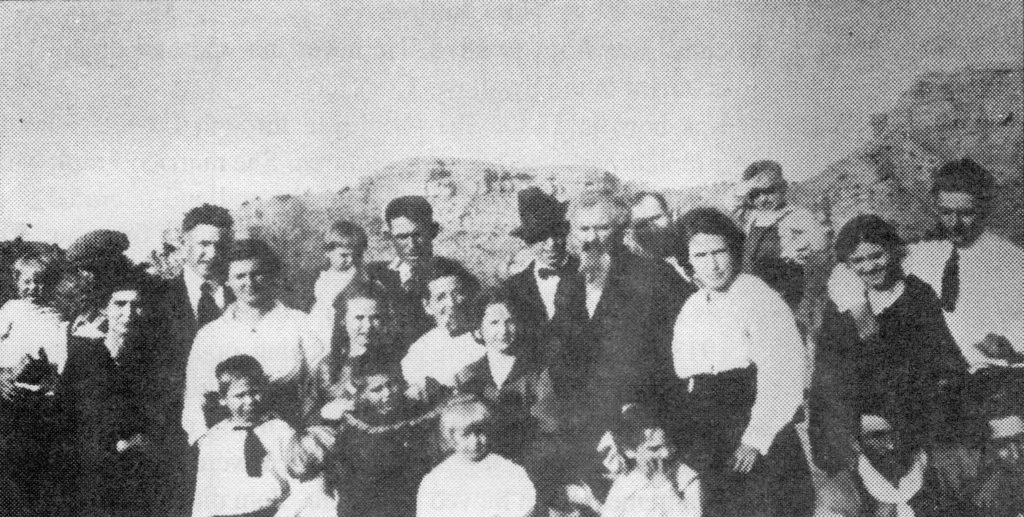
McBrides 1919 Back Row Harold Harney, Leslie, Chester, Florence, Lawrence, Oliver, Tom, Edgar Middle Row Sallie McBride Harney, Esther, Clela, Mother Kate, Iva McHogan, Father Sam, Eva McBride McHogan, Violet, Wendell Orville Front Row Ralph, Doran Harney, Gladys, Margaret Harney, Gladys Young, Bait and Frank
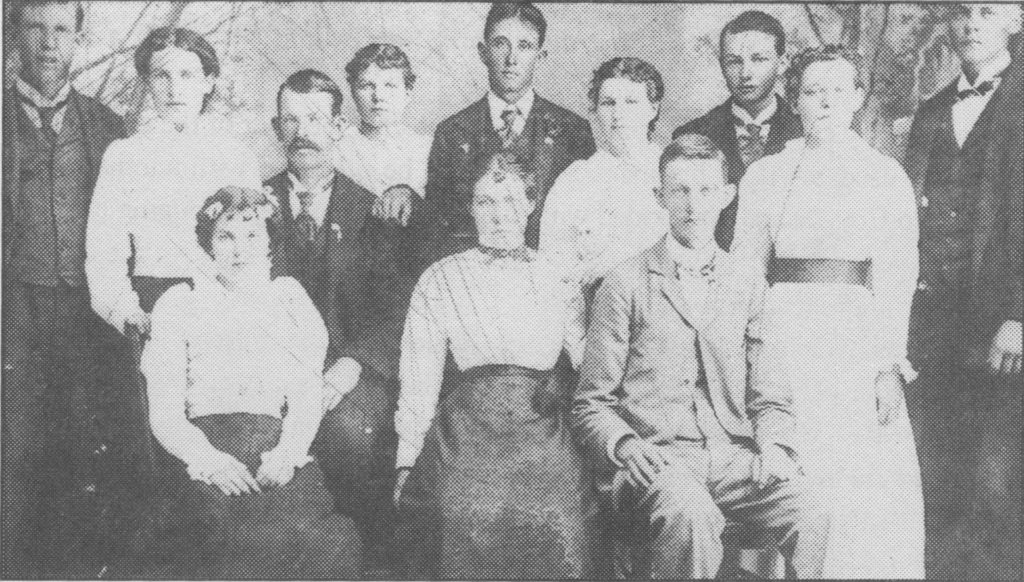
July 4 1899 standing Tom Eva Sam McBride Jr Emma Richie unknown Martha Richie Ray Presler Josie Richie Jay Witsel seated Alice Witzel Mary Richie Jim Brooks
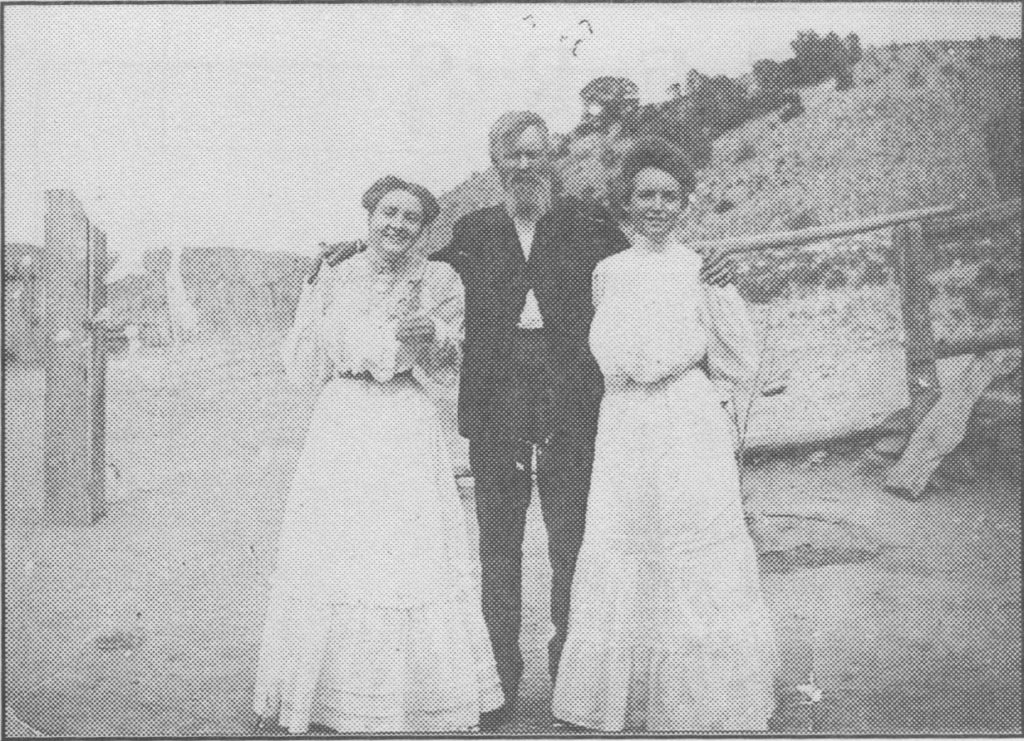
Adeline Harney, Samuel McBride Sr, Sallie Belle McBride
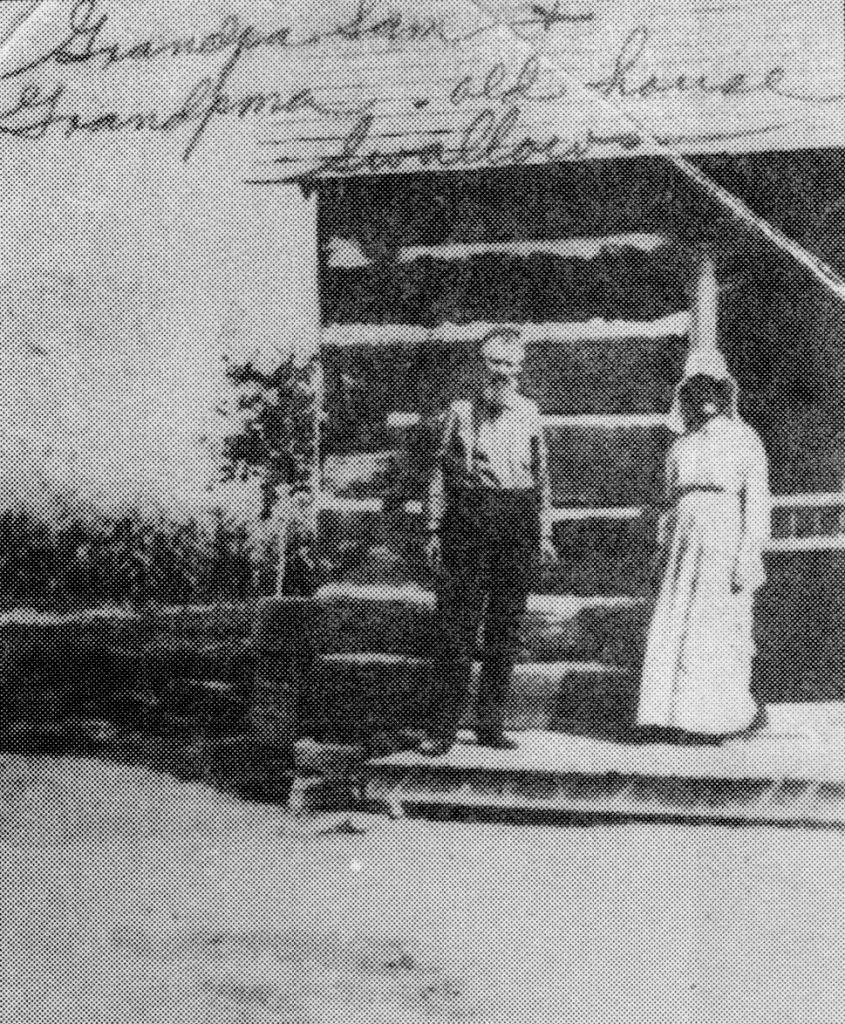
Samuel McBride Sr, Caterine “Kate” Lockhart McBride
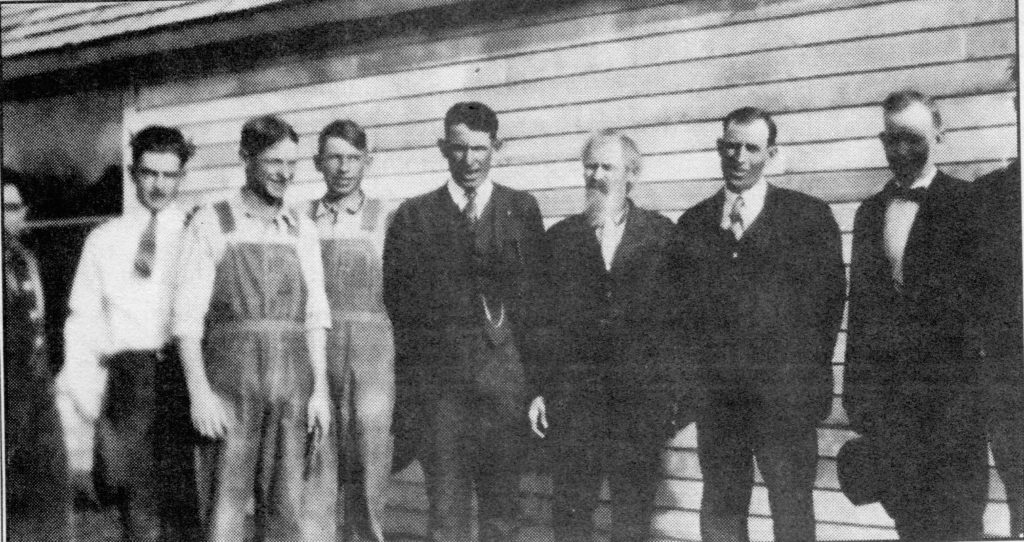
Frank McHogan, Wendell, Leslie, Bait, Lawrence, Grandpa McBride, Tom Oliver and Chester McBride
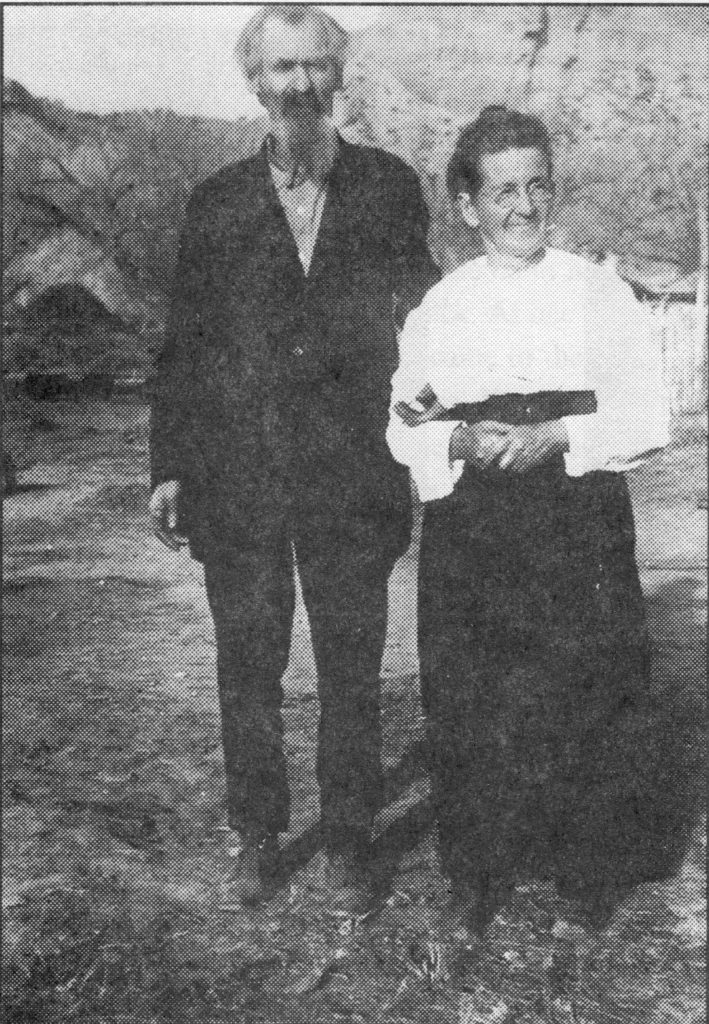
Samuel McBride Sr, Caterine “Kate” Lockhart McBride
The Children
Samuel “Sam”, the oldest child, was born in 1878. He never married and died in 1907. Census records give his occupation as teamster. He is buried in the Swallows Cemetery.
Eva (McBride) McHogan was born in 1880. She proceeded through Carlile School at Hobson and on through high school while helping her mother with the other ten children. She married Frank McHogan in 1906. For most of their married life they lived on Irving Place in Pueblo. They owned and operated a shoe repair shop for many years. Frank worked for the Denver & Rio Grande Railroad until his retirement. Their only child, Iva (Wright) was the oldest grandchild.
Thomas “Tom” Sanfort was born in 1881. At one time, he worked for the railroad. He and Will Harney moved to Ridgeway, Colorado, in 1913 and were partners in a ranching operation. Tom married Violet Young while living at Ridgeway and their son, Edgar, was born there. They were divorced and Tom returned to the Pueblo area. He was employed by the Bessemer Ditch Company for 34 years living at Avondale and the Saint Charles Mesa. In 1928 he married Blanche Dillman. Alma (Urquhart) and Allen were born of that union. They lived on Bessemer Ditch property until Tom’s retirement, then moved to Pueblo. Tom died in 1957.
William “Willie” Esau was born in 1883 and died in 1895 from complications following a wagon accident. He is buried in the Swallows Cemetery.
Lawrence Joseph was born in 1886. He married Esther Goes. He was employed by the Santa Fe Railroad and for many years was the signal boss in New Mexico. The family, Clella (East), Ralph who died at 16, Gladys (Drinkard) and Florence (Groves) lived on East 9th in Pueblo. After Lawrence’s death, Esther continued to live in East Pueblo.
Sallie Belle (Harney) (Woods) was born in 1888. She was the only child to attend college. After two years at Greeley State Teachers College she received a:Teachers Certificate. She taught for several years at Ridgeway, Colorado and in the Swallows area and then married John Harney. Three children were born; Margaret (Kern), Doran and Harold. After John’s death in the flu epidemic, she married Siotha Woods. They lived in Green River, Wyoming. Harold was killed in an automobile accident there. In 1945, the family moved to Salt Lake City, Utah, and Sallie remained there until about a year before her death in Rock Springs, Wyoming.
Oliver was born in 1890. He never married and was the beloved bachelor uncle to his many nephews and nieces. He served in the Army. He too, was employed by the Denver & Rio Grande Railroad for many years. He made his home with his niece, Iva, in Denver. After his retirement, he spent much of his time visiting with various relatives in Pueblo. He died of cancer and is buried at Fort Logan Cemetery in Denver.
Bartlett “Bart” was born in 1893. He stayed on the ranch after his siblings left, took care of his parents and ran the ranch. After Kate’s death, Bart inherited the ranch. Bart served in the Army in France during World War I and for the rest of his life suffered from the effects of being gassed. He was a real old time cowboy. Bart and Polly (Pearl Sandstrom) were married. Bart built a frame house on a hillside a short distance south of the family home. Their children were Arthur “Buddy”, Barbara (Sabo) and Ronald. Buddy attended Swallows school before moving to Pueblo. After selling the ranch to Chester, Bart moved his family to Pueblo and was employed by the Denver and Rio Grande Railroad. Polly remained in Pueblo after his death.
Chester Irving was born in 1896. He married Marion Murgatroyd. They lived in Florence and then moved to California. Chester was badly injured in an explosion in a cement plant there losing most of his vision. They returned to the ranch at Swallows, taking care of Mother Kate, until her death. He continued to operate the ranch after buying it from Bart. He later sold the ranch and he and Marion lived just outside of Penrose for several years. Shortly before his death they moved to Denver. He is buried in the Florence Cemetery. Although legally blind, Chester was a fine auto mechanic. Marion taught school near Penrose before her marriage and during World War II taught again at Swallows School. Their son Chester “Chet”, grew up on the ranch at Swallows.
Leslie was born in 1899. He attended the University of Chicago, becoming an electrician. While he and Oliver were working in Arizona in a copper mine, he met and married Edith Wills. After their first son was born they moved to Las Vegas, Nevada, where he worked on the Hoover (Boulder) Dam. Eventually, they moved to Carlsbad, New Mexico, where Leslie helped install the original lighting in Carlsbad Caverns. He was working at a potash mine near Carlsbad when he was killed in an auto accident. They had four children, Don, Arthur “Pete,’, Billie (Gray) and Carol (Allen).
Wendell Orville was born in 1902. He married Wilma Linton. They lived in Green River, Wyoming for a time but the majority of their life was spent in the Los Angeles area. He enlisted in the Army at age 16. He was employed by the railroad most of his life. They had two sons, Dean and Monty K.
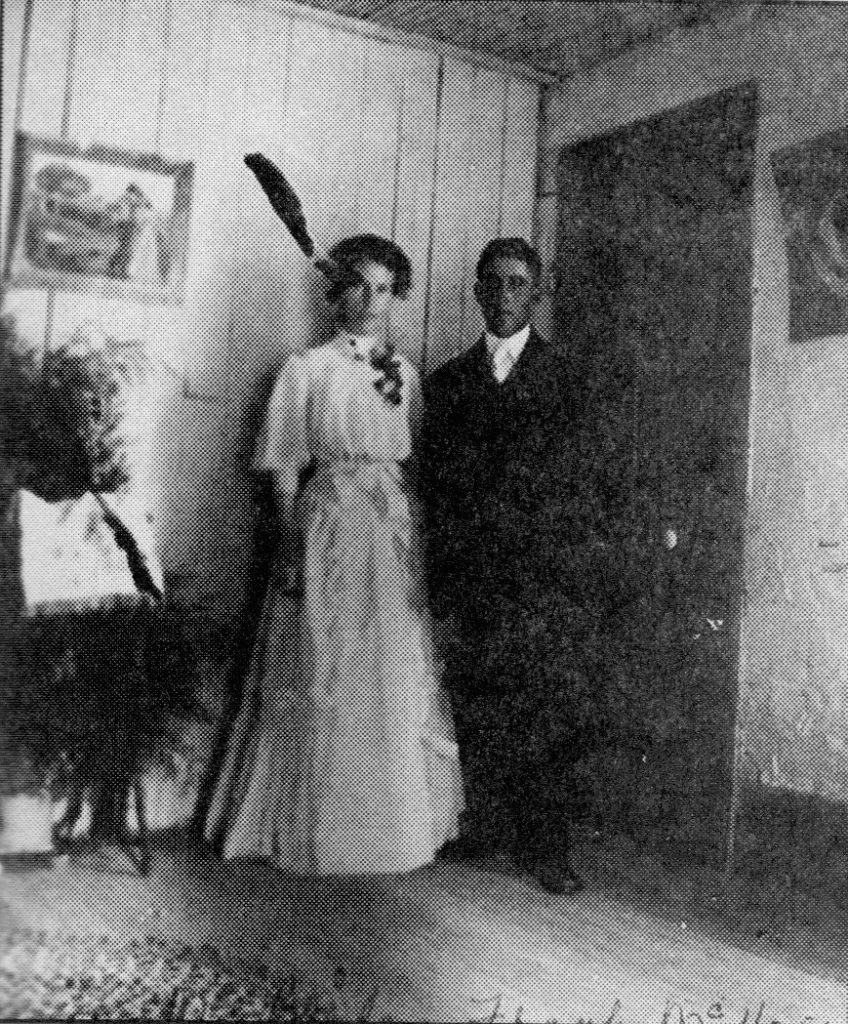
Eva McBride, Frank McHogan Wedding
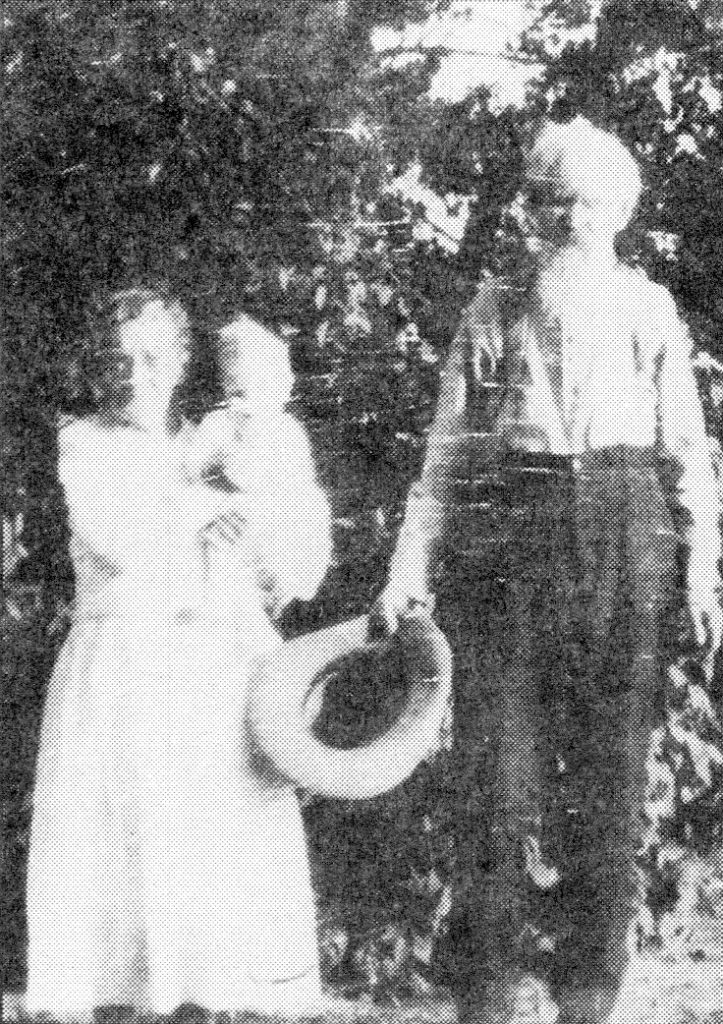
Eva and Iva McHogan and Sam McBride Sr
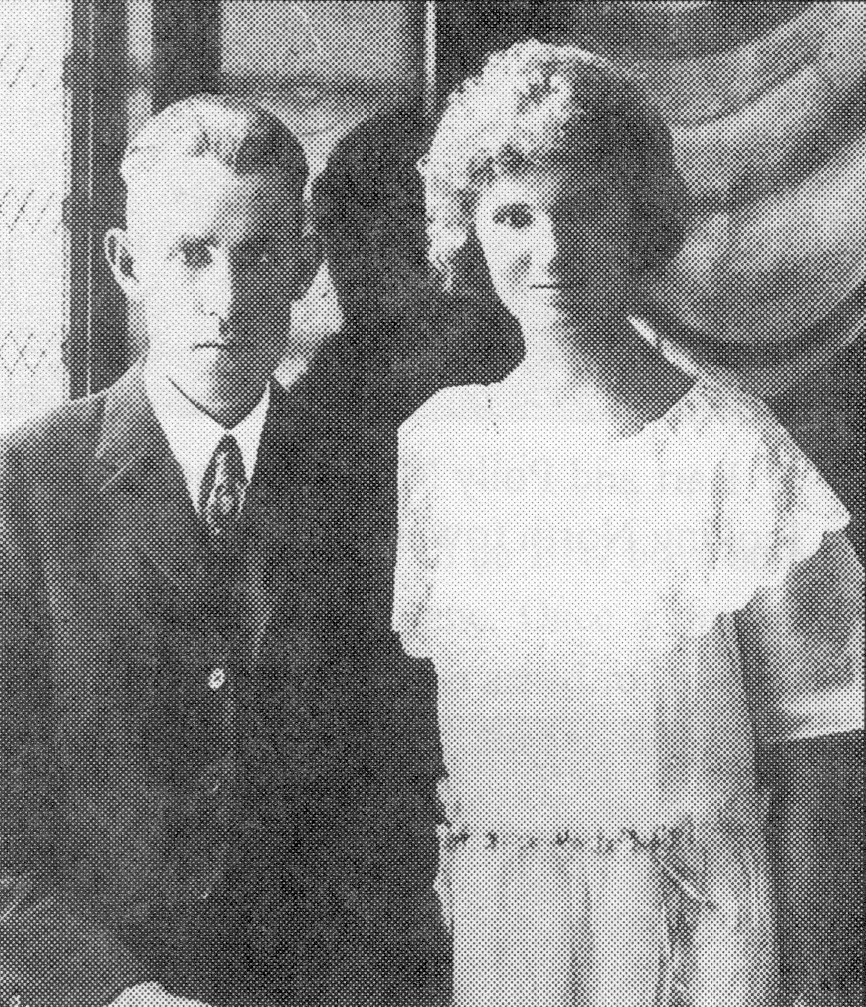
Chester and Marion McBride taught at Swallows school
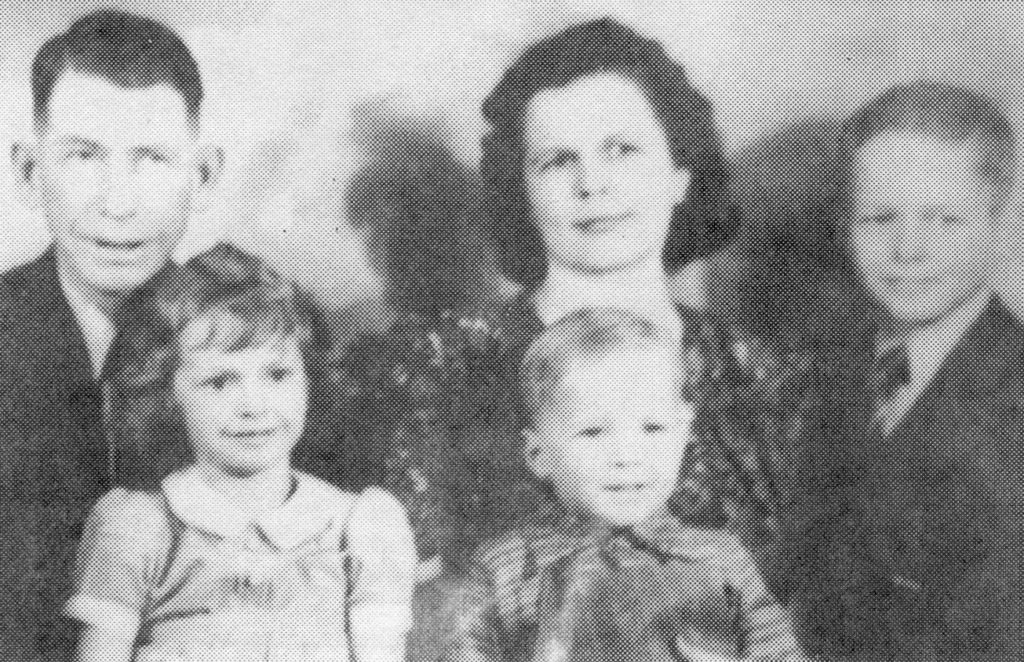
Bart McBride, wife Polly, children Barbara, Ronald and Buddy
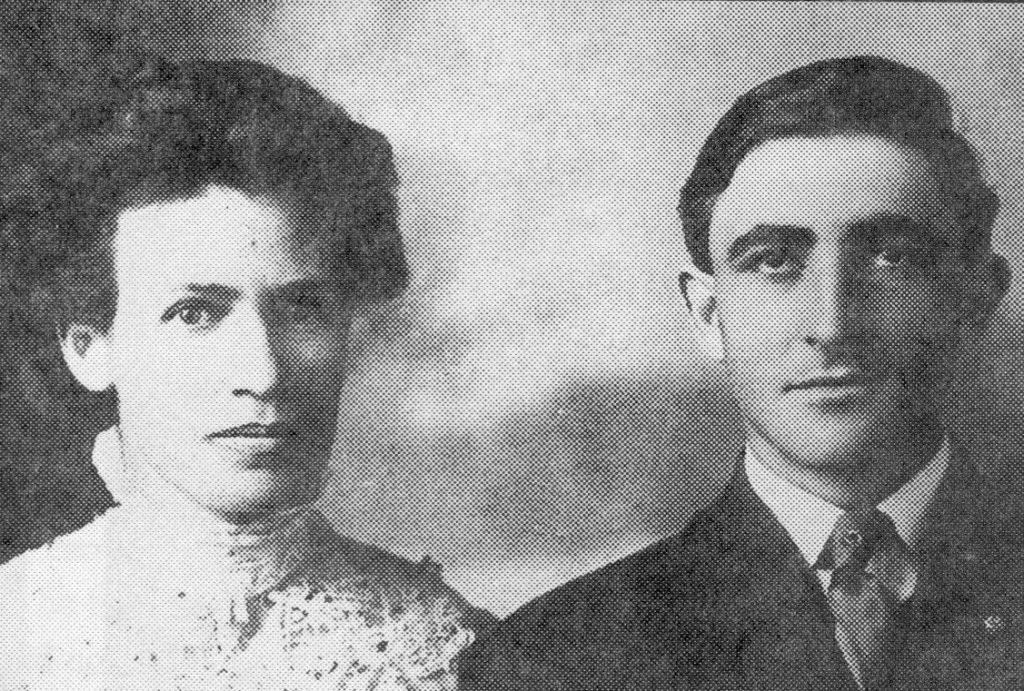
Eva McBride, Frank McHogan Wedding Day
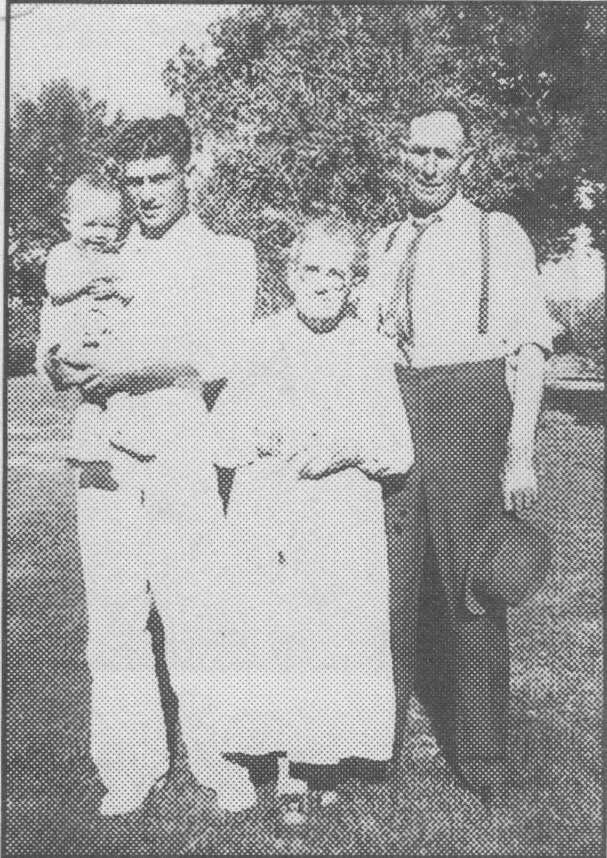
Wayne, Edgar, Kate, Tom McBride
Stories About Sam McBride
To make sure his boys were doing their work, Sam would sit out on a hill and watch them through his telescope.
Sam was a very conscientious man. He was an elected member of the school board.
He always used SAM as his name so as not to be confused with another Samuel McBride, who was the Treasurer in Pueblo County and absconded with a large sum of money belonging to the county. People, hearing that Samuel McBride lived on the river west of Swallows, would come looking for the thief. As far as we know, Samuel McBride was never apprehended.
Sam was registered as a fruit and vegetable dealer with the railroad in 1900-1901. Tom said that one year they grew cabbage and when they tried to sell them in the fall, grocers in Pueblo didn’t want to pay very much so they stored them in the cellar all winter. When spring came, Tom took a wagon load to town and sold them for “good money”. He said that since he had all that money he bought a big bunch of bananas and ate all of them.
The C F & I Ditch builders were told they could not trespass on the McBride place. One day Sam went up near the ditch and saw tracks where they had turned around on his place. He was MAD, so the next morning, he took his gun and son, Tom, to confront the C F & I crew. He threatened them with his gun if they came on his place again.
Charles Hobson recalled that Sam McBride had a long beard that eventually turned white. According to Mr. Hobson, Sam was a shrewd man, but had to be to raise such a large family. The C F & I wanted sand that Sam had and he made them buy it. He said that Sam never rode a horse but always walked. One time during the 1921 flood, he was in Pueblo, so he walked all the way to Portland and then back down the river to his home. He didn’t like to sit in a chair — he liked to sit by a coal stove on the floor.
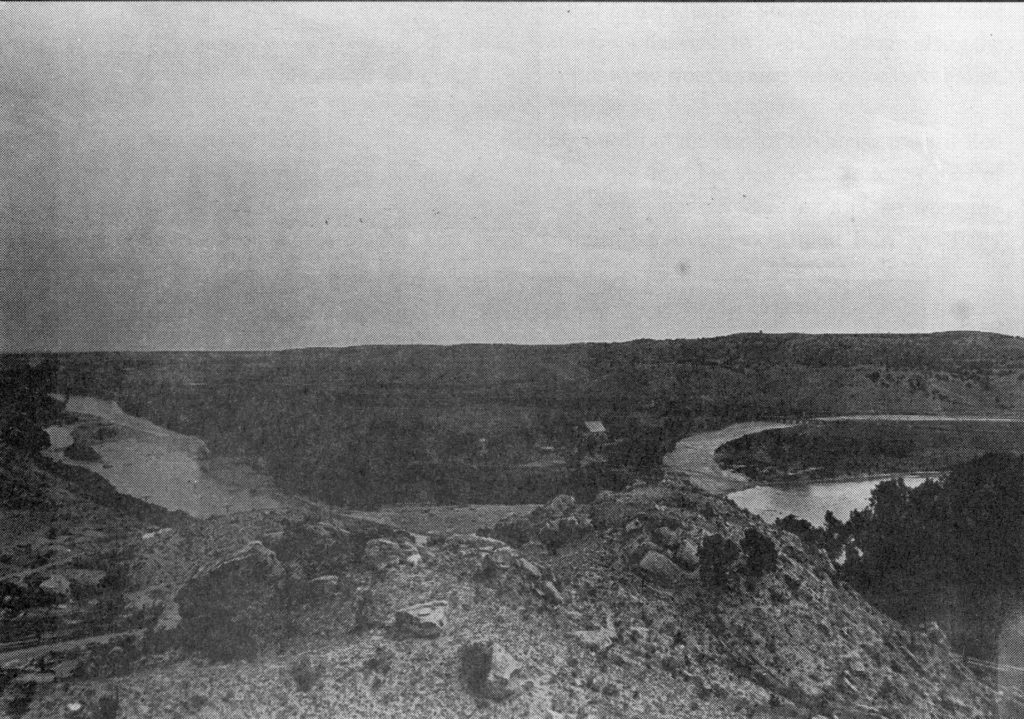
McBride Ranch north of Arkansas River
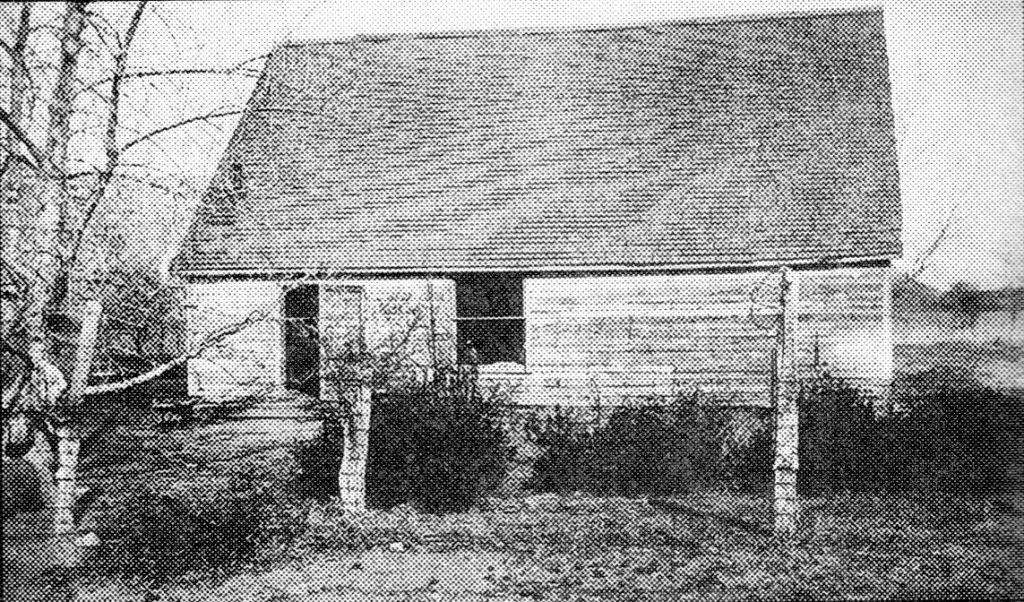
McBride house near Cabin Creek west of Swallows
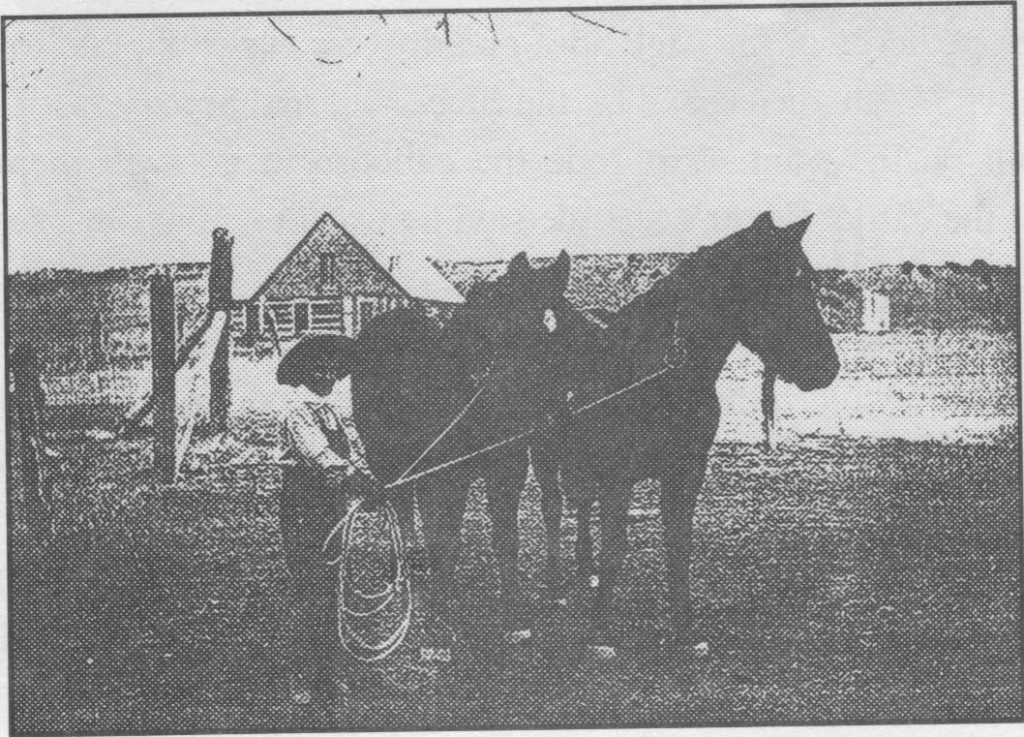
Wendell Orville McBride at McBride homestead
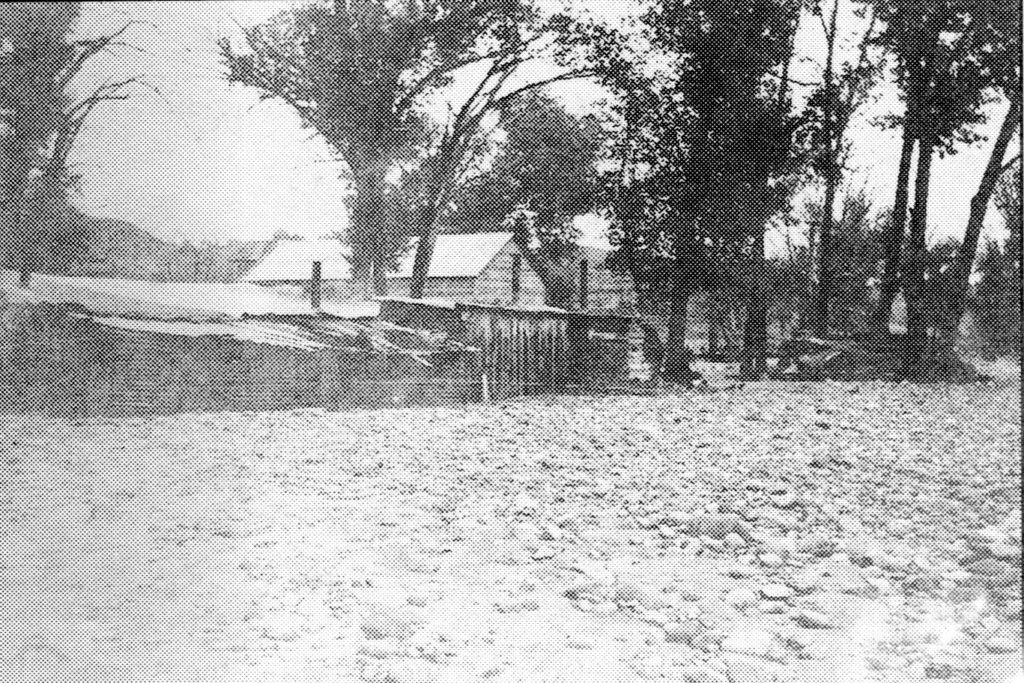
McBride house viewed from Arkansas River west of Swallows
Other Stories
Since the boys in the area had to help with ranching and farming tasks, they grew to be BIG boys before they finished school. Since they were such big boys, they gave the men teachers a bad time. Once a tiny little woman applied for job as teacher. The board said she just couldn’t handle those boys but she asked for a chance. Tom said the first day of school she came in, and with emphasis, laid a whip on her desk. After that she didn’t have a bit of trouble with those big boys.
Tom used to tell a story about stealing watermelons from a neighbor. This fellow made his bed in the patch to keep the boys from stealing his melons. Tom and friends sneaked into the field without waking up the neighbor, stole all the melons they wanted and then cut melons in half and circled the man’s bed with them.
The Santa Fe railroad line was on the south side of the river and passed through the McBride ranch. Trains used to stop at the ranch to pick up and drop off passengers. McBrides would get groceries by train. When Iva and Sallie were small, the train they rode to Swallows was called “the Plug”.
Bart McBride was a very kind, polite, thoughtful person. He was reputed to be a good corn picker too. Charley Avery, who lived north of Hobson, Charles Hobson and Bart, traded work back and forth. Bart would get pasture from Charles Hobson and give him a cow in return. He helped Charles get his start in cattle.
One year several families in the area went together with the McBrides and drove cows to Pueblo to ship to Kansas City. They were driven through Pueblo, down Northern Avenue by the Steel Mill and across Salt Creek to the stockyards east of Pueblo where they were put on the train. Bart rode the caboose to go with them. They stopped twice along the way to water, feed and rest the cattle. Edgar McBride said he was quite put out because he wanted to go with his Uncle Bart and his father, Tom, would not let him go.
Several family members remember trips to “the ranch”, crossing Rush Creek three times and then across Goodbar Creek. After a flood down the creek, the road would be washed out and they would have to break down the side of the creek banks again to get across. Barbara remembers having to spend the night in the car one night as Bart’s family was trapped between two turns in Rush Creek. Alma remembers that at Swallos, once after a flood the banks were so high they could not break them down and had to turn around and go back to Pueblo. One friend visiting said the road was so crooked that he was glad they went back the same way so they could get “untwisted”.
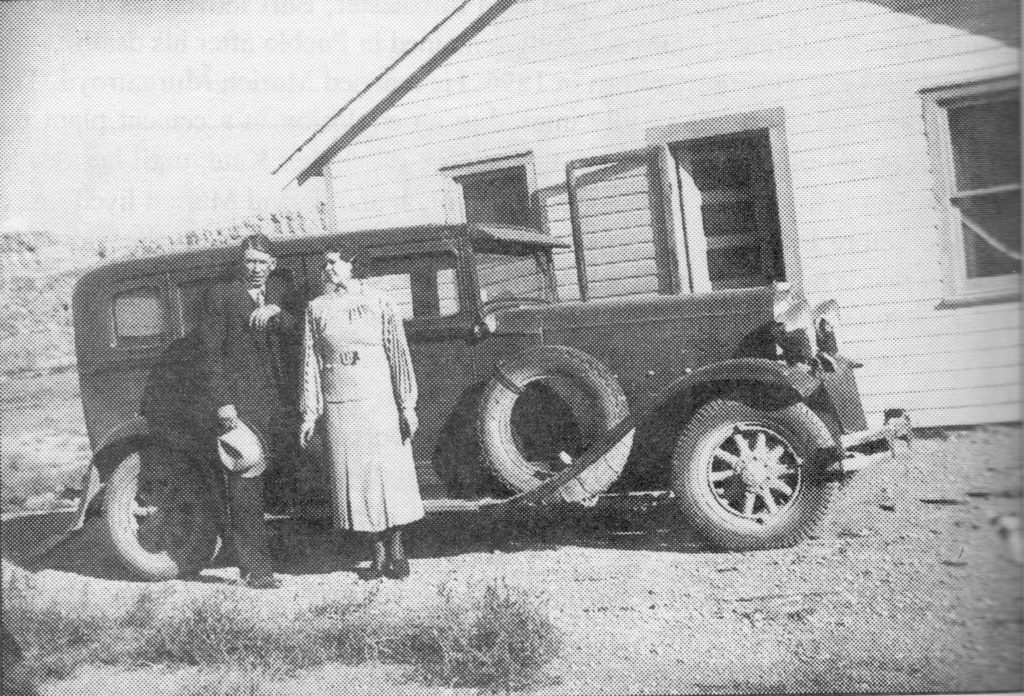
Bart and Polly McBride in front of their home south of Sam and Kate’s home on the McBride Homestead 1936
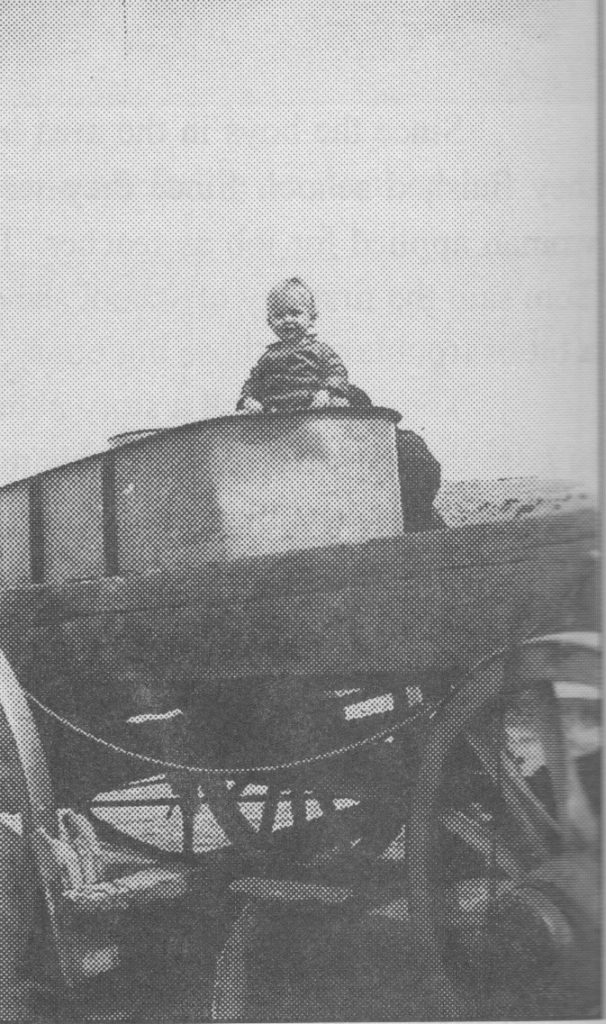
Dr Barbara McBride Sabo hauling water from the river
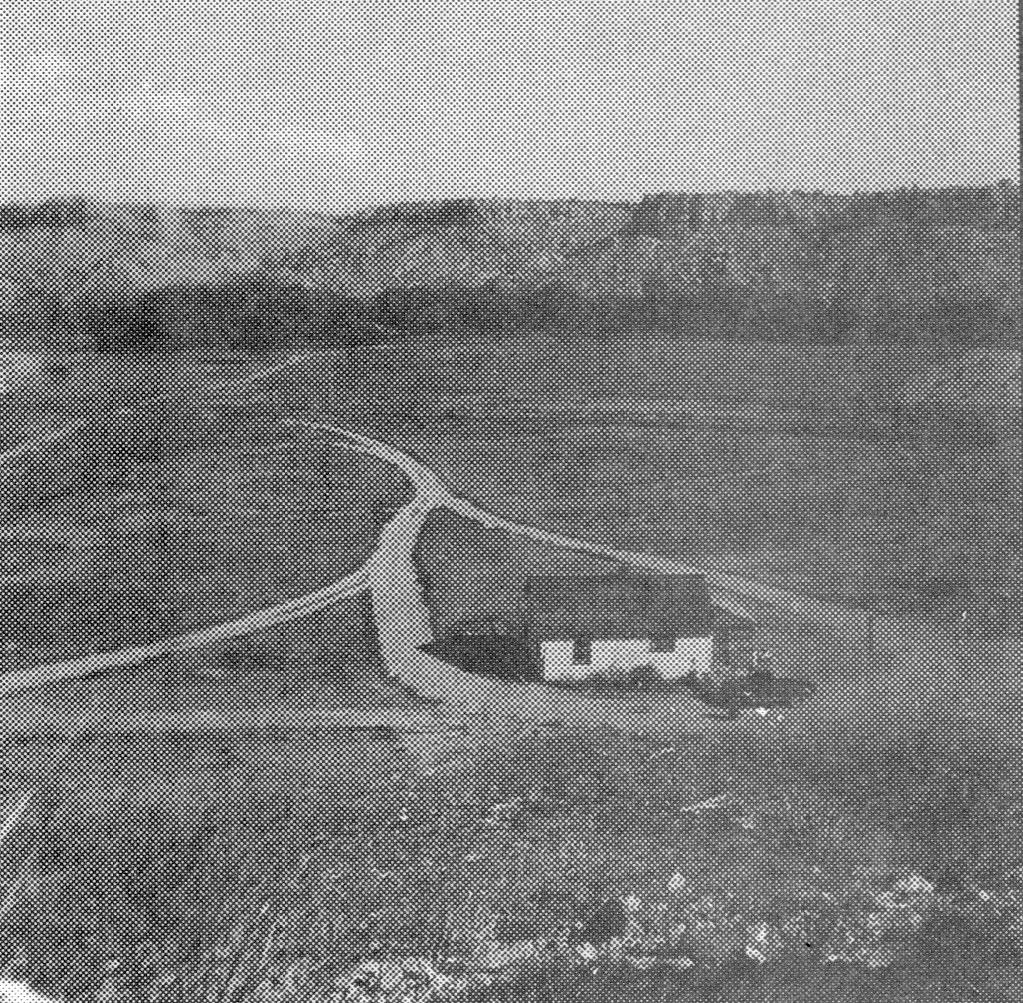
Bart and Polly McBride home looking North toward Arkansas River
